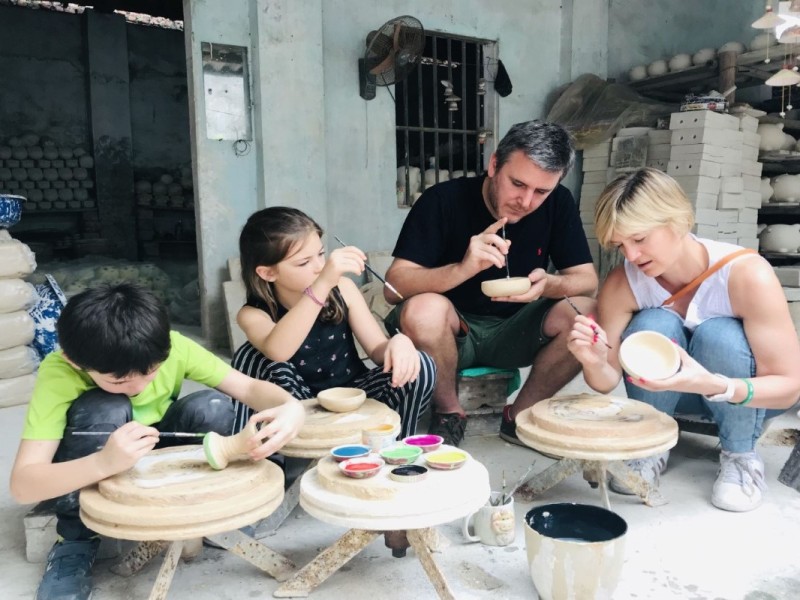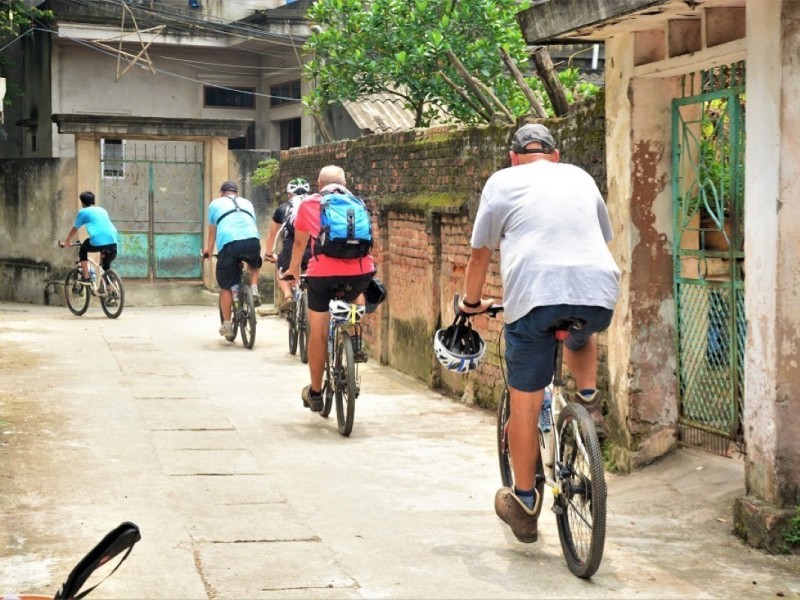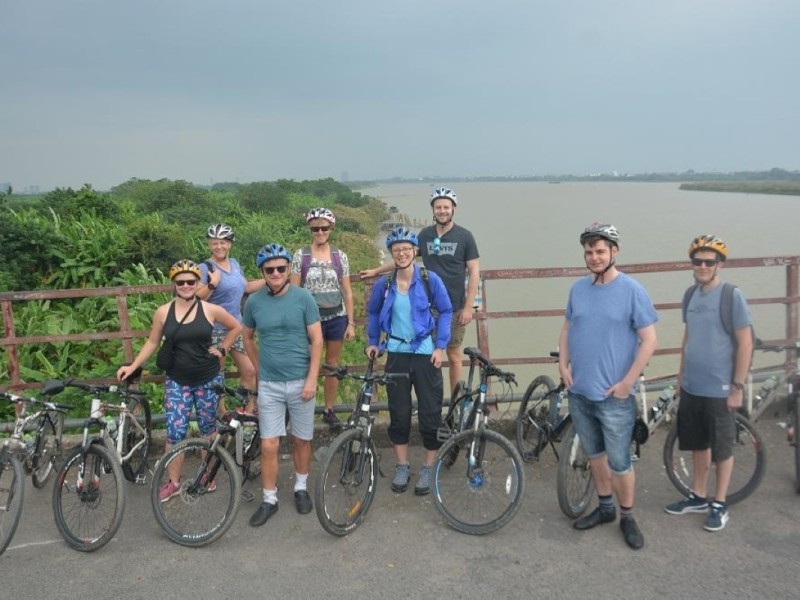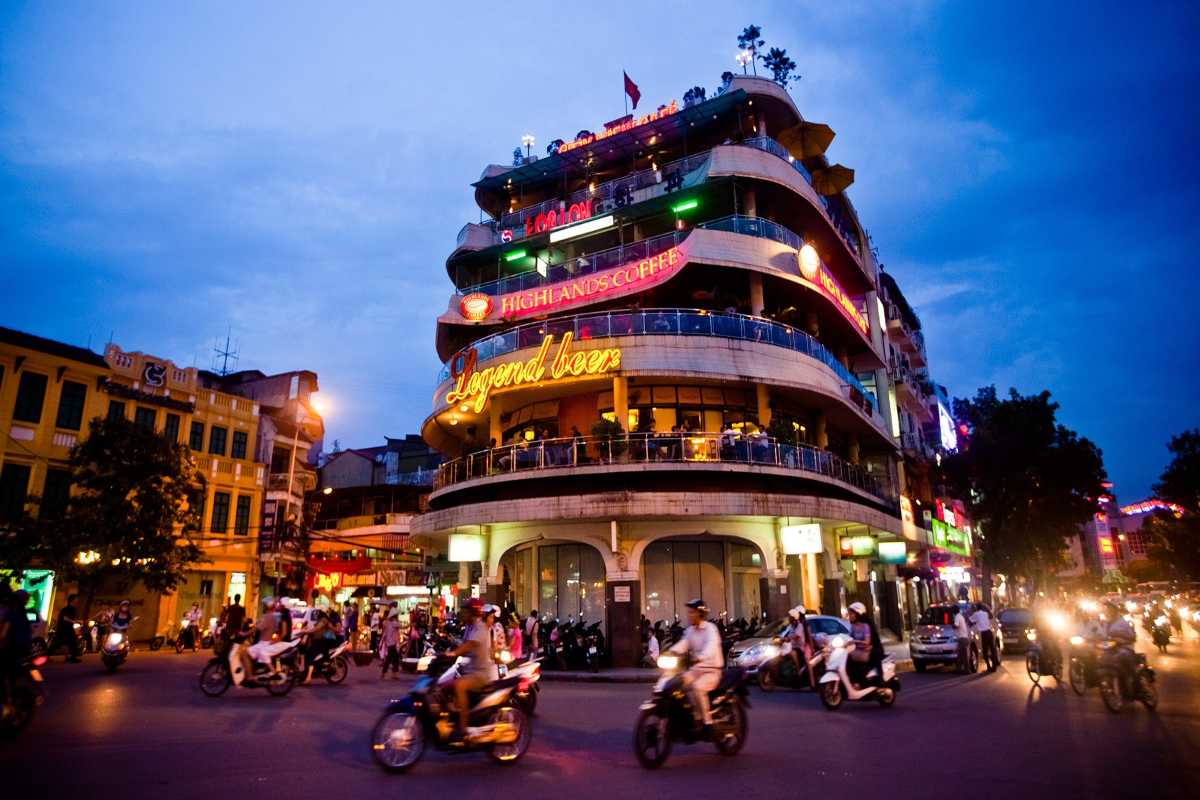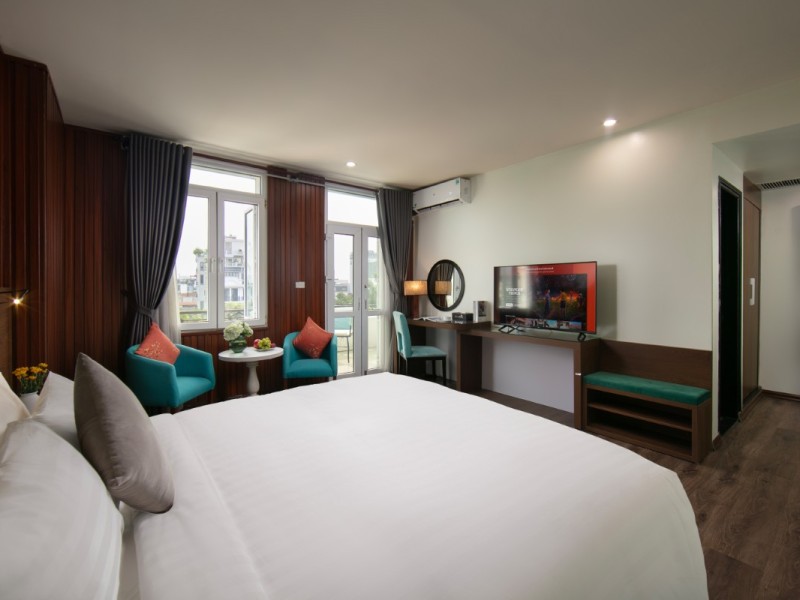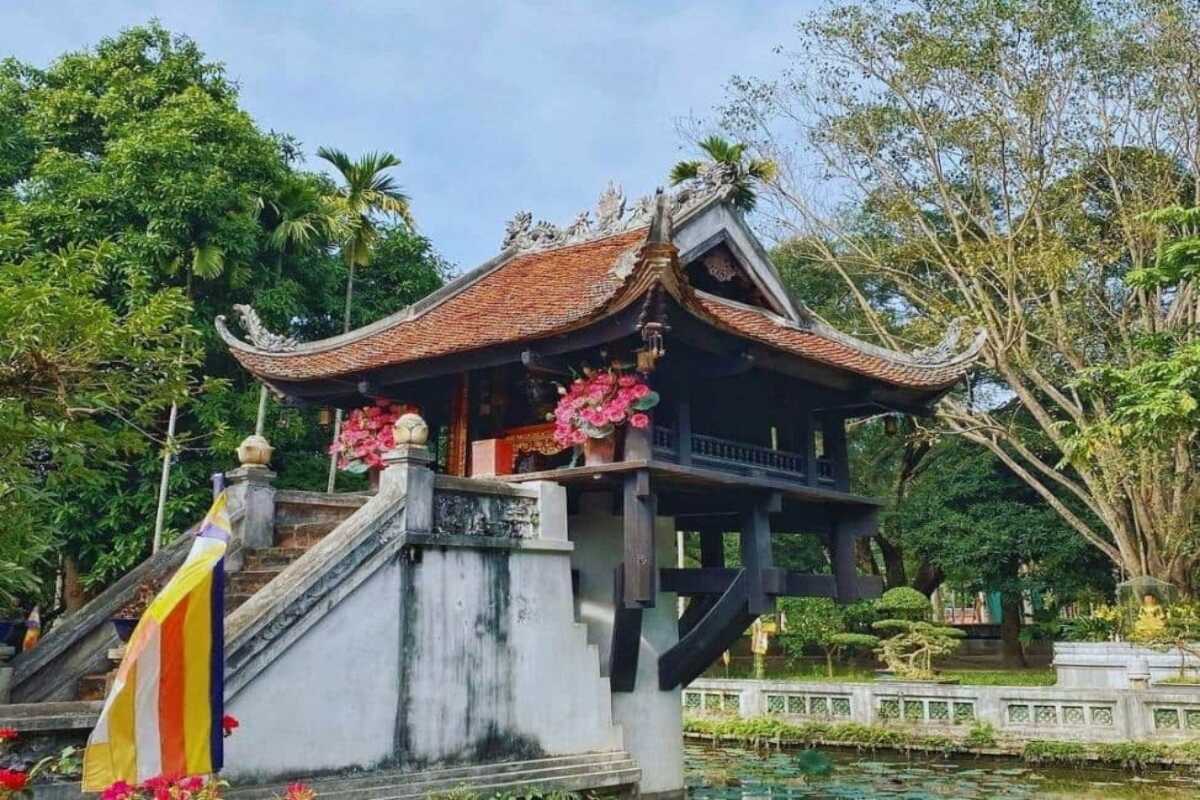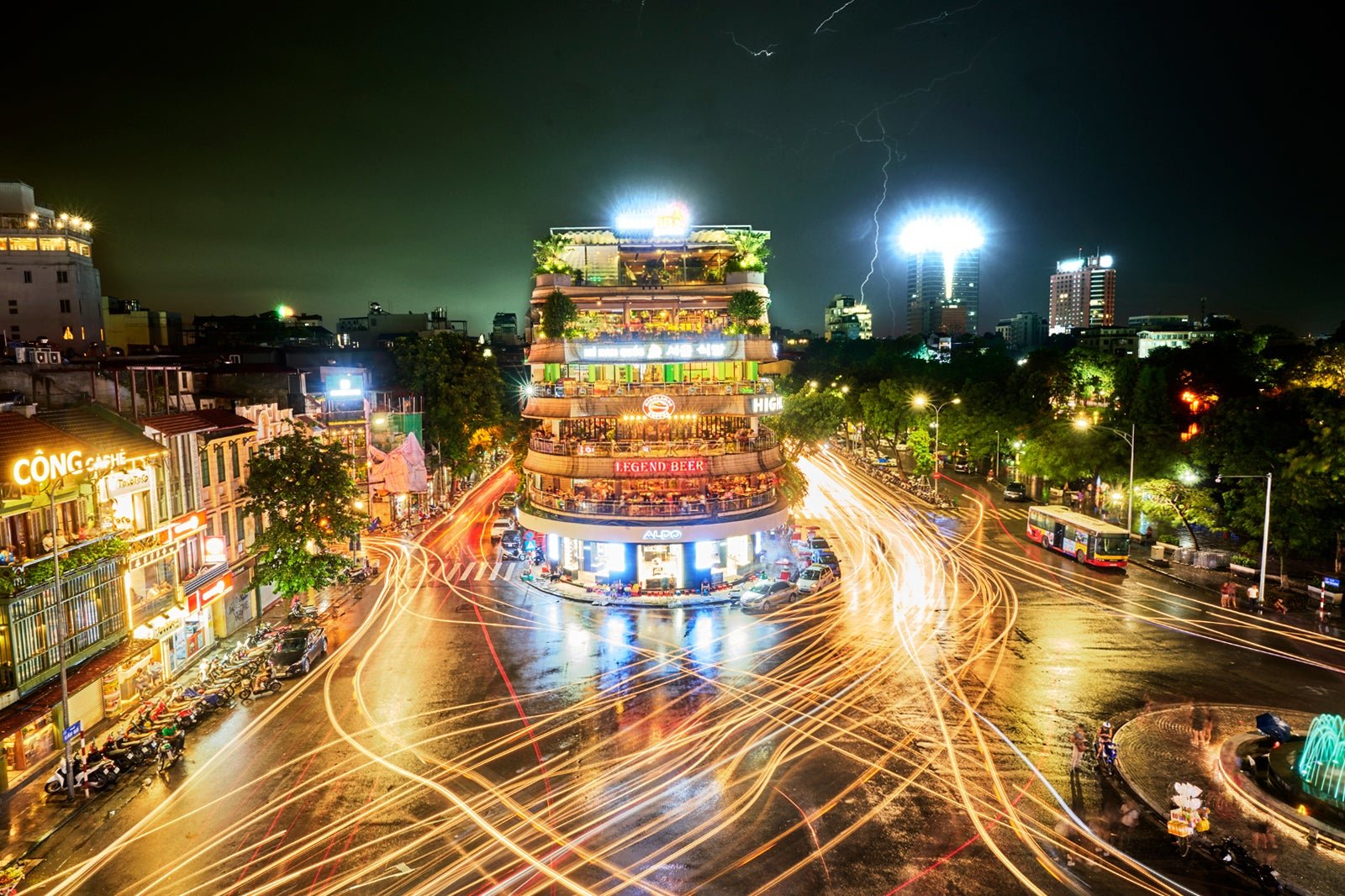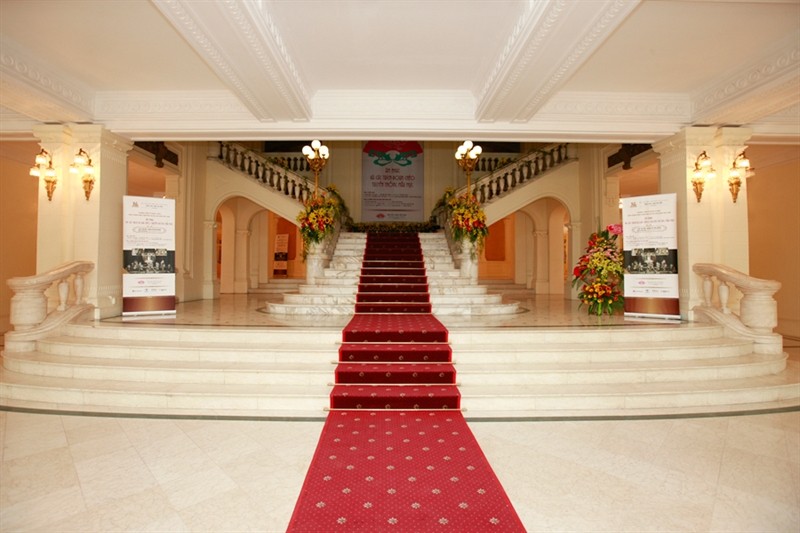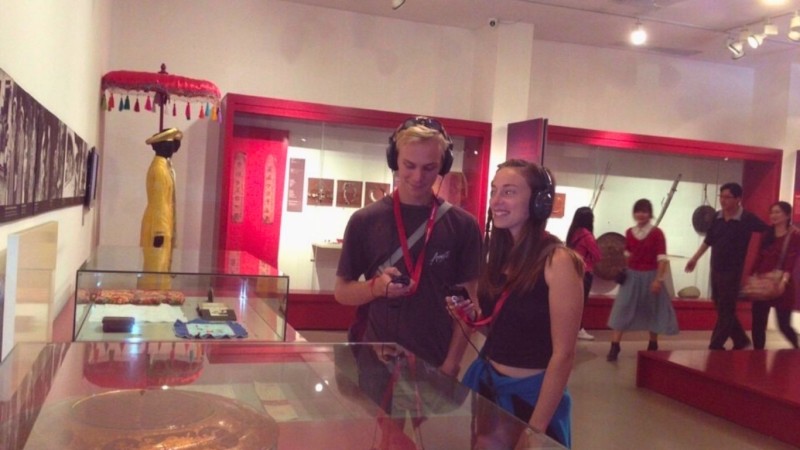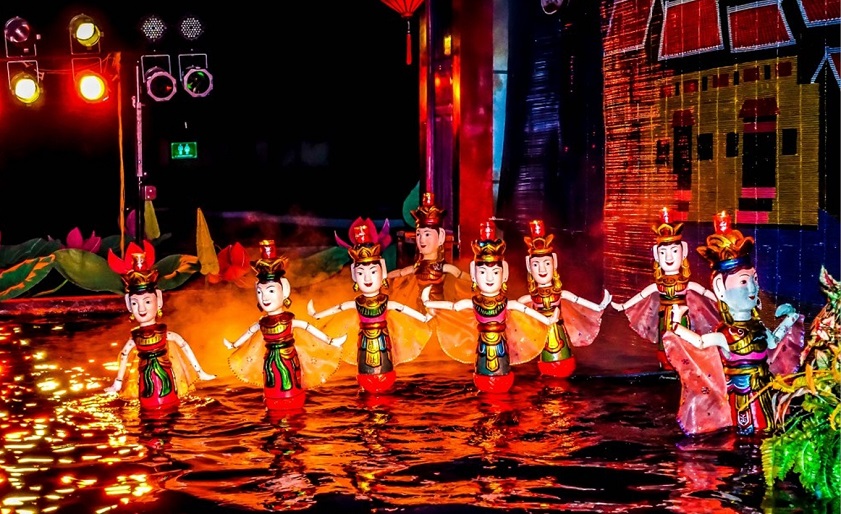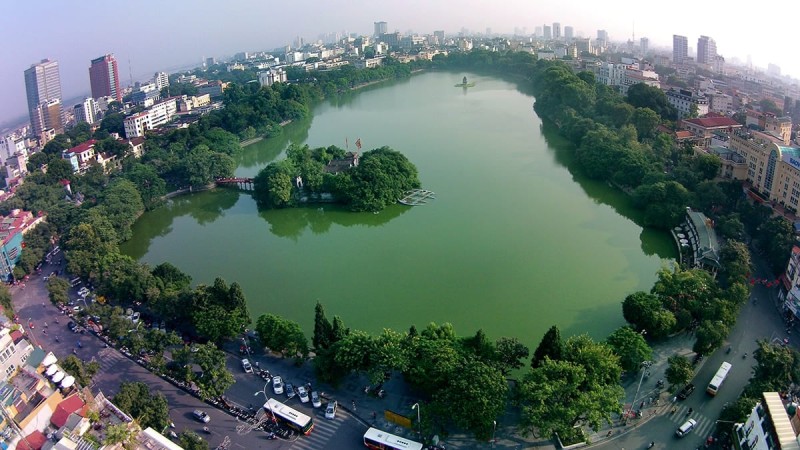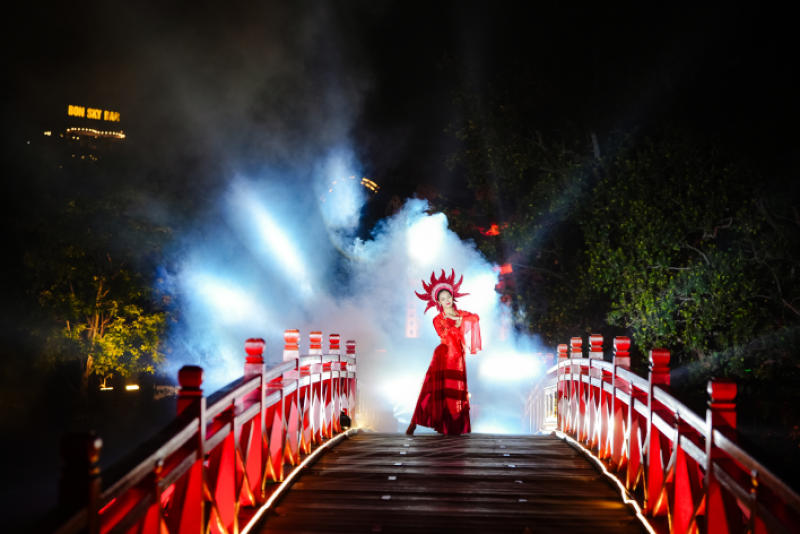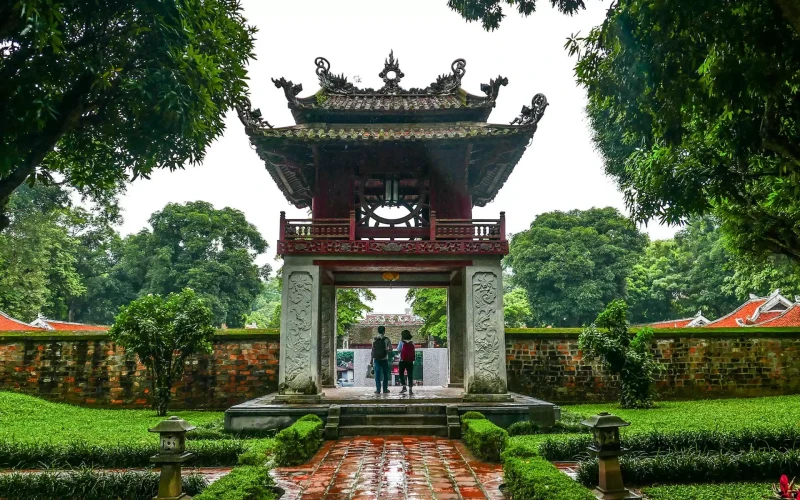Ho Chi Minh Mausoleum Hanoi: History, Travel Guide & Tips
Ho Chi Minh Mausoleum in Hanoi preserves the embalmed body of Vietnam’s revolutionary leader, Ho Chi Minh. It offers visitors a chance to honor his legacy while exploring iconic architecture and nearby cultural landmarks. The site features daily changing of the guard ceremonies and tranquil gardens, making it a significant historical destination.
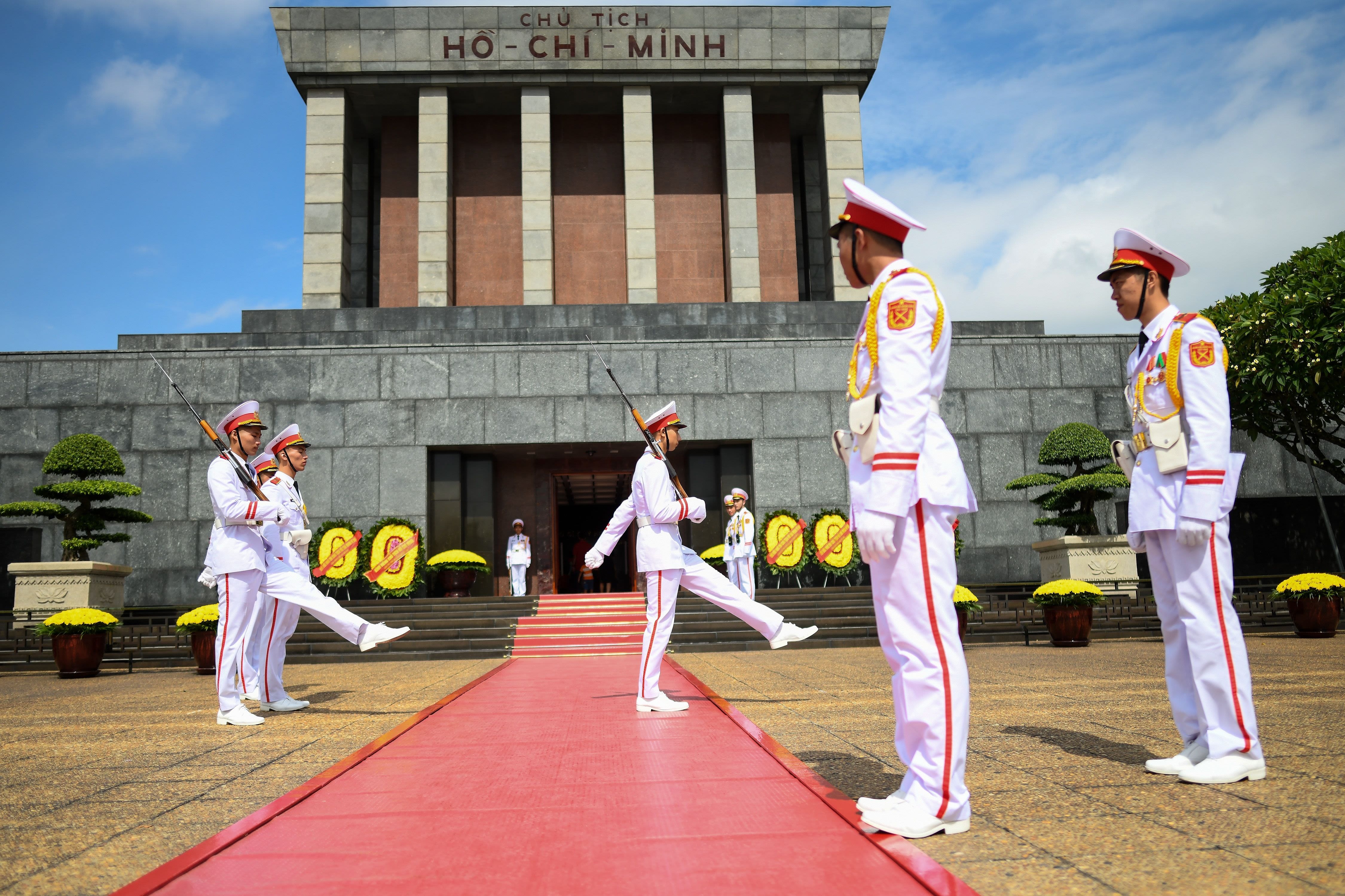
Introduction to Ho Chi Minh Mausoleum
Discover the Ho Chi Minh Mausoleum, a revered historical and cultural landmark in Vietnam, standing proudly in Ba Dinh Square. This iconic site preserves the legacy of the revolutionary leader Ho Chi Minh, drawing visitors from around the world.
The Ho Chi Minh Mausoleum commands respect as the final resting place of Ho Chi Minh, Vietnam’s beloved revolutionary figure. Located at the heart of Ba Dinh Square in Hanoi, it symbolizes Vietnam’s rich history and the enduring spirit of independence. Its solemn architecture blends influences from Vietnamese and Soviet styles, reflecting the deep cultural and political significance held by this monument.
Visitors arriving at the mausoleum experience a profound connection to Vietnam’s past, where history and heritage converge. The site serves not only as a memorial but also as a beacon of national pride and cultural reverence.
Plan your visit to the Ho Chi Minh Mausoleum to witness this monumental tribute and explore the surrounding historic Ba Dinh Square, a hub of Vietnamese heritage.
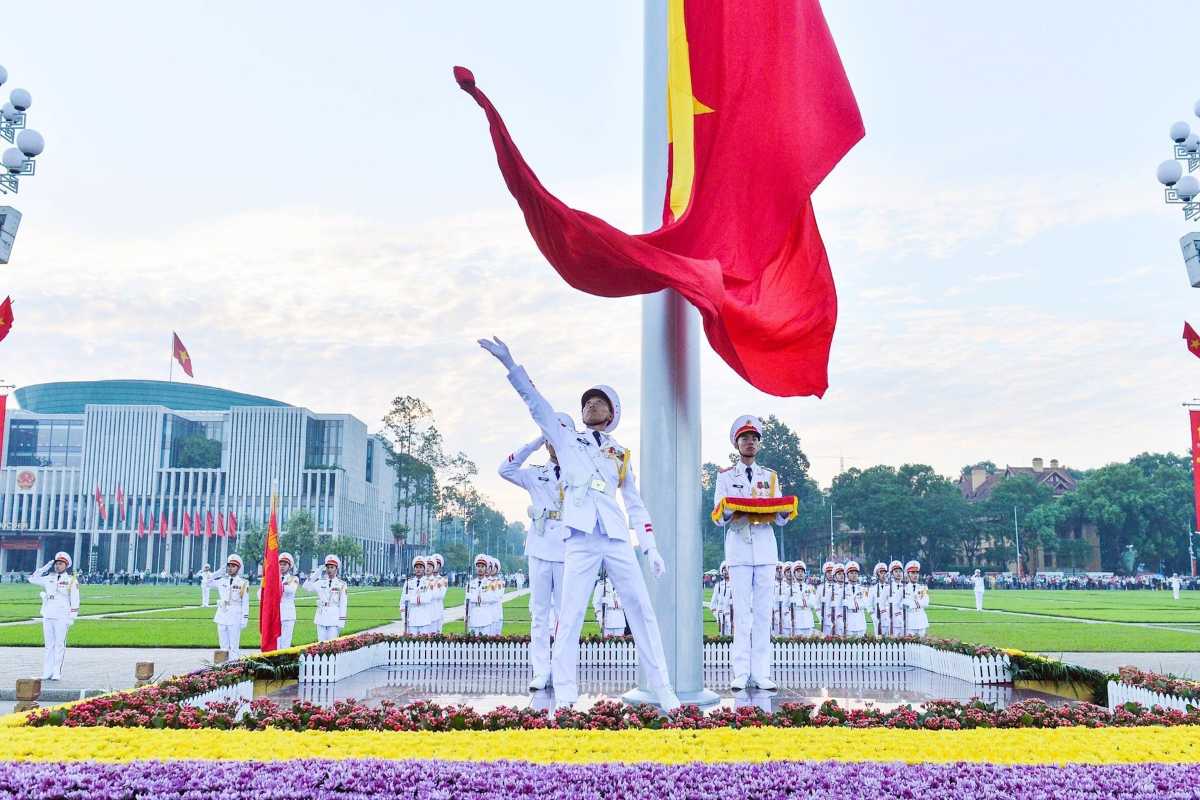
Overview of the Mausoleum
The Ho Chi Minh Mausoleum is a monumental structure dedicated to preserving the embalmed body of Ho Chi Minh, the father of modern Vietnam. Situated in Ba Dinh Square, it stands as a symbol of the country’s revolutionary history and cultural pride. The mausoleum’s design reflects a blend of Vietnamese architectural traditions and Soviet influences, creating a dignified and imposing landmark.
The site attracts visitors who wish to pay homage and learn about Ho Chi Minh’s enduring legacy within the heart of Hanoi. It remains a cultural landmark, offering a solemn space for reflection and national remembrance.
Visiting the Ho Chi Minh Mausoleum provides insight into Vietnam’s journey to independence and the reverence held for its key historical figures.
Plan your visit early to experience the mausoleum at its most peaceful and respectful times.
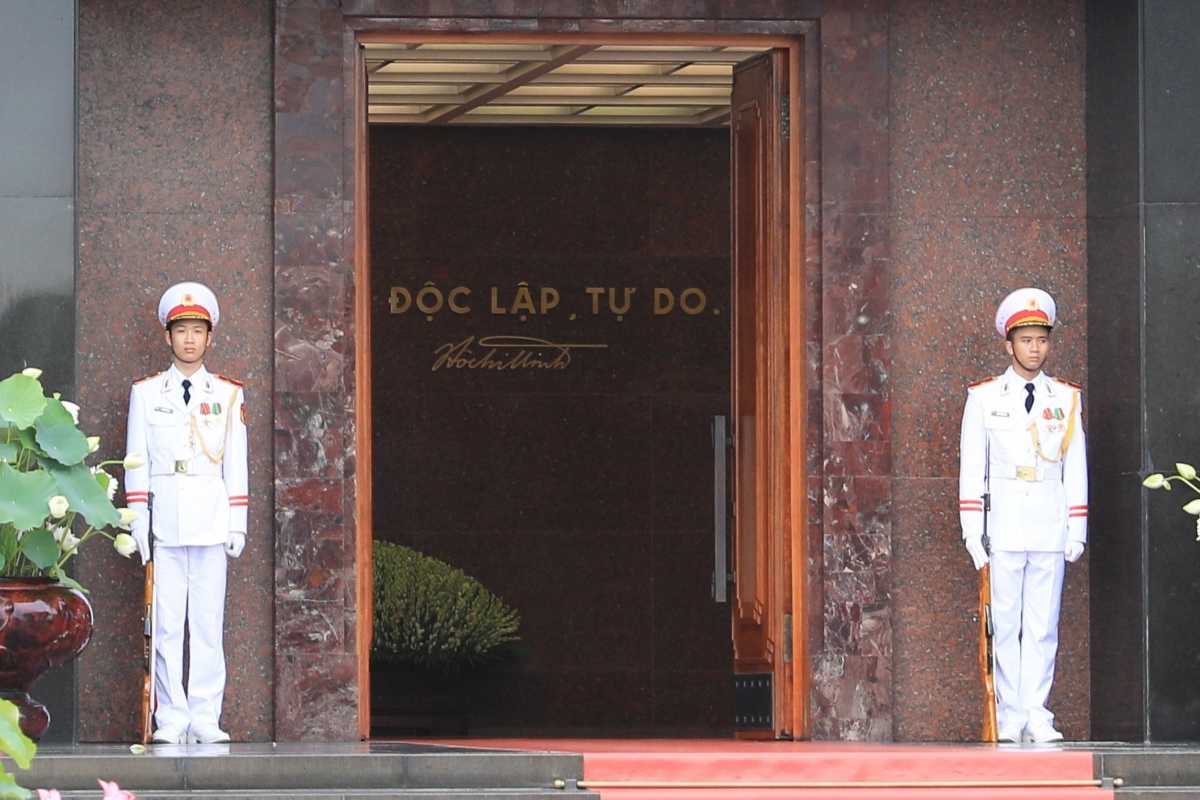
Significance of Ho Chi Minh in Vietnamese History
Ho Chi Minh is celebrated as the revolutionary leader who shaped modern Vietnam. His vision and leadership were instrumental in the country’s struggle for independence from colonial rule. The mausoleum embodies his historical significance, serving as a national symbol of unity, resilience, and patriotism.
Understanding the importance of Ho Chi Minh in Vietnamese history deepens visitors’ appreciation for the mausoleum and the cultural heritage it represents. His legacy continues to inspire generations, making the site a pivotal destination for those interested in Vietnam’s past and national identity.
Exploring the mausoleum invites you to connect with the story of Vietnam’s independence and the profound impact of Ho Chi Minh’s leadership.
Don’t miss the chance to immerse yourself in this historic journey on your visit to the Ho Chi Minh Mausoleum.

Architectural Design and Symbolism
The Architectural Design Ho Chi Minh Mausoleum reflects a unique blend of cultural and political influences that symbolize Vietnam’s history and values. Drawing inspiration from both Vietnamese traditional styles and Soviet monumental architecture, the mausoleum embodies strength, dignity, and national pride. Its imposing façade and precise structural details convey respect for Ho Chi Minh’s legacy while representing Vietnam’s revolutionary spirit.
Visitors can appreciate the thoughtful fusion of design elements that make the mausoleum not only a resting place but also a powerful cultural landmark.
Discover how the architectural choices contribute to the mausoleum’s symbolic meaning and historical significance as you explore this iconic site.
Plan your visit to experience the harmonious blend of heritage and design at the Ho Chi Minh Mausoleum.
Influences from Vietnamese and Soviet styles
This section highlights the key architectural influences that shape the mausoleum’s design, blending cultural traditions and political symbolism.
- Vietnamese Architecture: Features traditional roof lines and stone carvings that reflect national heritage.
- Soviet Influence: Incorporates monumental scale and austere lines representing strength and endurance.
- Cultural Fusion: Combines Eastern aesthetics with socialist realism to honor both local identity and historical alliances.
These influences create a unique structure that stands as a testament to Vietnam’s history and Ho Chi Minh’s enduring legacy.
Explore these architectural elements to fully appreciate the mausoleum’s cultural depth.
Materials and structural details
Understanding the mausoleum’s construction reveals the care and craftsmanship involved.
- Granite and Stone: Durable materials chosen for longevity and solemn appearance.
- Concrete Framework: Provides structural stability to withstand environmental challenges.
- Bronze Elements: Used in decorative features symbolizing strength and permanence.
- Elevated Platform: Symbolizes the elevated status of Ho Chi Minh in Vietnamese history.
- Symmetrical Design: Reflects harmony and balance, key concepts in Vietnamese culture.
These materials and construction choices ensure the mausoleum’s endurance as a national monument.
Discover the physical foundation that supports this cultural landmark during your visit.
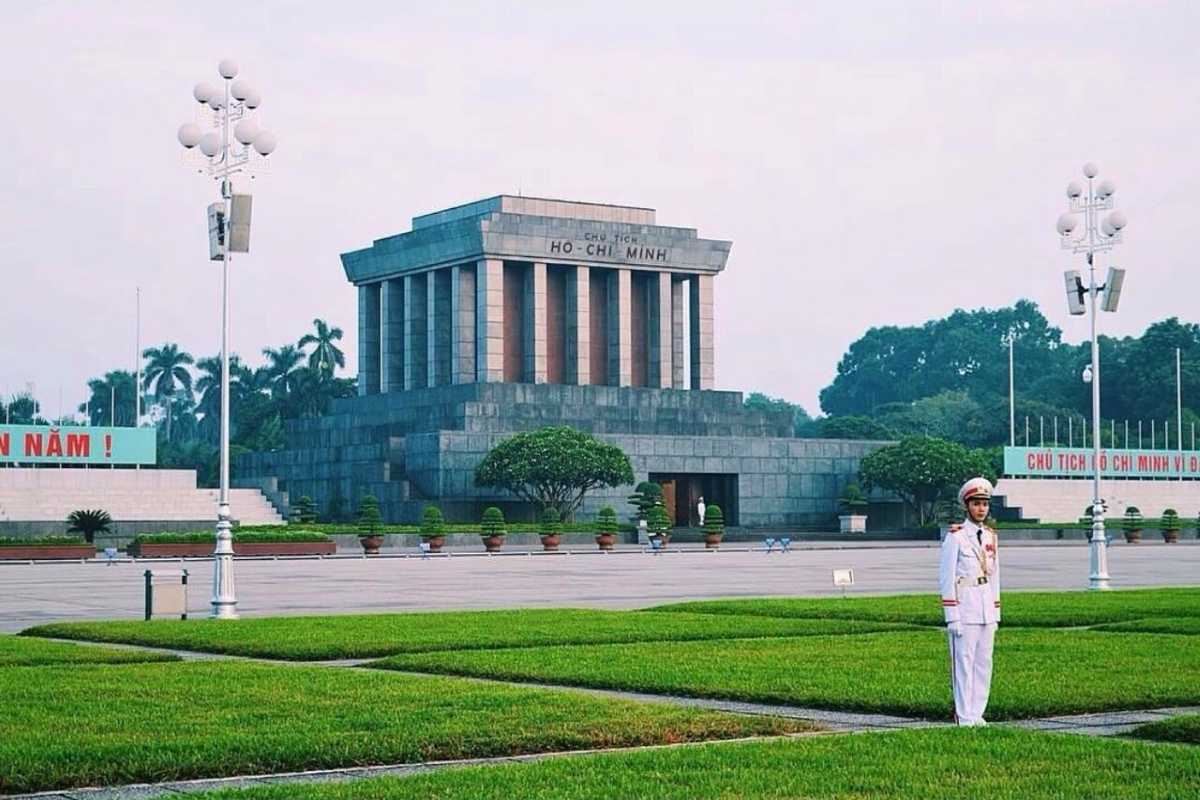
Historical Background
The Ho Chi Minh Life and Legacy reflects the profound influence of Ho Chi Minh on the history of Vietnam. As the nation’s revolutionary leader, his role in the independence movement is honored through the mausoleum, which stands as a symbol of national pride and cultural heritage.
This section explores the historical context of Ho Chi Minh’s life and the origins of the mausoleum, providing essential background to understand its significance. Knowing this history enriches your visit and deepens appreciation for this iconic monument.
Plan your visit to the Ho Chi Minh Mausoleum with a clear sense of its historical importance.
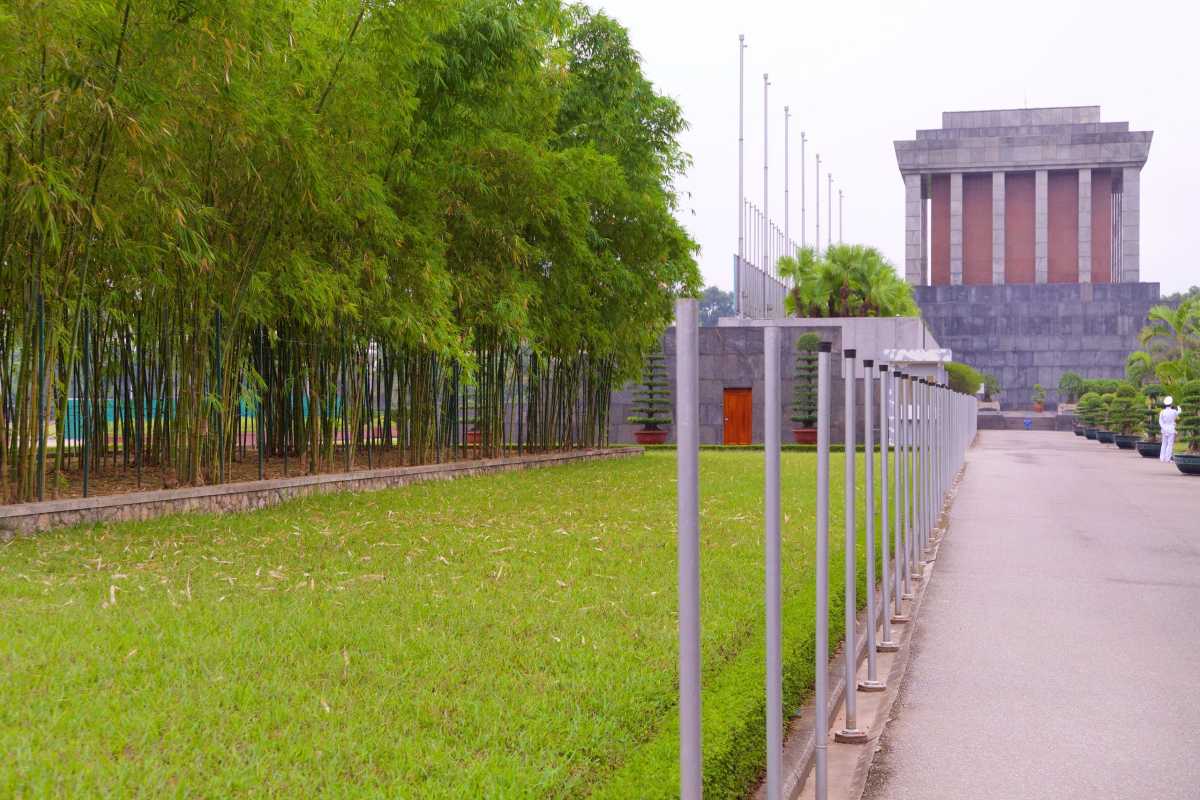
Life and Legacy of Ho Chi Minh
Ho Chi Minh played a pivotal role in Vietnam’s struggle for independence and the shaping of its modern identity. His revolutionary career included significant milestones such as founding the Vietnamese Communist Party and leading the country through the independence movement.
Understanding the key milestones in Ho Chi Minh’s revolutionary career gives you deeper insight into why the mausoleum holds such reverence. His legacy as a unifying and visionary leader continues to inspire generations across Vietnam.
Explore these historic milestones to fully appreciate the meaning behind the Ho Chi Minh Mausoleum.
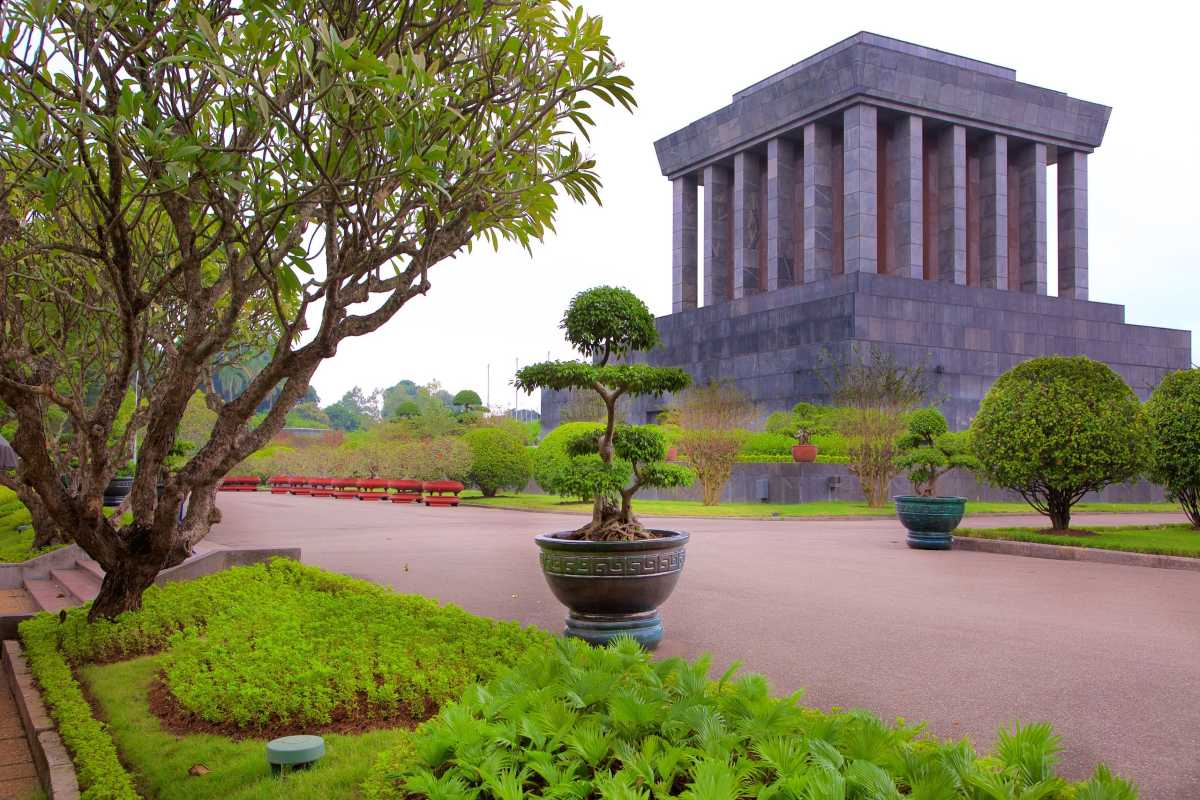
Construction and Development of the Mausoleum
The construction of the Ho Chi Minh Mausoleum occurred between 1973 and 1975 during a politically significant era for Vietnam. The mausoleum’s design and development reflect the nation’s dedication to honoring their revolutionary leader.
Learning about the timeline of construction and the political context helps you understand the mausoleum’s role not just as a monument but as a symbol of national unity and resilience during Vietnam’s modern history.
Prepare for your visit by gaining awareness of this powerful historical background.

Changes and Renovations Over Time
The Ho Chi Minh Mausoleum has been subject to ongoing maintenance and preservation efforts to protect its structural integrity and historical importance. These renovations reflect the nation’s commitment to preserving this symbol of national pride through changing times.
The site’s upkeep adapts to environmental challenges and historical developments, ensuring the mausoleum remains both a cultural landmark and a safe place for visitors.
Discover how the mausoleum has evolved and been cared for over the years.
Maintenance and preservation efforts
This section highlights key measures taken to preserve the mausoleum:
- Regular restoration of stone and granite surfaces to prevent wear and damage.
- Controlled environmental systems to protect the embalmed body of Ho Chi Minh.
- Security upgrades to safeguard the site and maintain order during visits.
- Routine structural inspections ensuring safety and longevity.
- Collaboration with cultural heritage organizations to align conservation with best practices.
These efforts ensure the mausoleum continues to honor Ho Chi Minh’s legacy respectfully.
Learn more about the ongoing care that preserves this important monument.
Impact of historical events on the site
Historical developments have shaped the mausoleum’s physical and cultural status:
- Political changes influencing security protocols and visitor access.
- National anniversaries prompting commemorative restorations.
- Regional environmental challenges addressed through structural adaptations.
- Shifts in cultural policy affecting preservation priorities.
- Community involvement reinforcing the mausoleum’s role in national identity.
These impacts highlight the mausoleum’s dynamic history and continued significance.
Appreciate how historical context contributes to the mausoleum’s enduring presence.
Key milestones in Ho Chi Minh’s revolutionary career
This section outlines important events in Ho Chi Minh’s journey:
- Early activism in France and Asia: Foundations of his revolutionary ideals.
- Founding the Vietnamese Communist Party in 1930: A major step in the independence movement.
- Declaration of Vietnamese independence in 1945: Establishing a new nation.
- Leadership during the First Indochina War: Resistance against colonial powers.
- Posthumous honors including mausoleum construction: Cementing his legacy.
These milestones are essential to understanding Vietnam’s modern history.
Reflect on these historical events when visiting the mausoleum.
Role in Vietnam’s independence movement
Ho Chi Minh’s leadership was vital in uniting Vietnam against colonial rule. His vision inspired the nation’s fight for freedom and sovereignty.
The mausoleum commemorates his role and the success of the independence movement, standing as a symbol of national pride.
Understanding this context enriches your experience at the mausoleum.
Timeline of construction (1973-1975)
The mausoleum’s construction featured:
- Design incorporating Vietnamese and Soviet architectural styles.
- Use of durable materials symbolizing strength and permanence.
- Community involvement emphasizing national unity.
- Completion in 1975, coinciding with political milestones in Vietnam.
This timeline highlights the nation’s dedication to honoring Ho Chi Minh.
Witness this achievement during your visit.
Political and cultural context during construction
Built during political consolidation, the mausoleum represents Vietnam’s resilience after years of conflict.
It reflects traditional Vietnamese values blended with socialist ideals, embodying the country’s complex identity post-war.
This context adds depth to the mausoleum’s cultural significance.
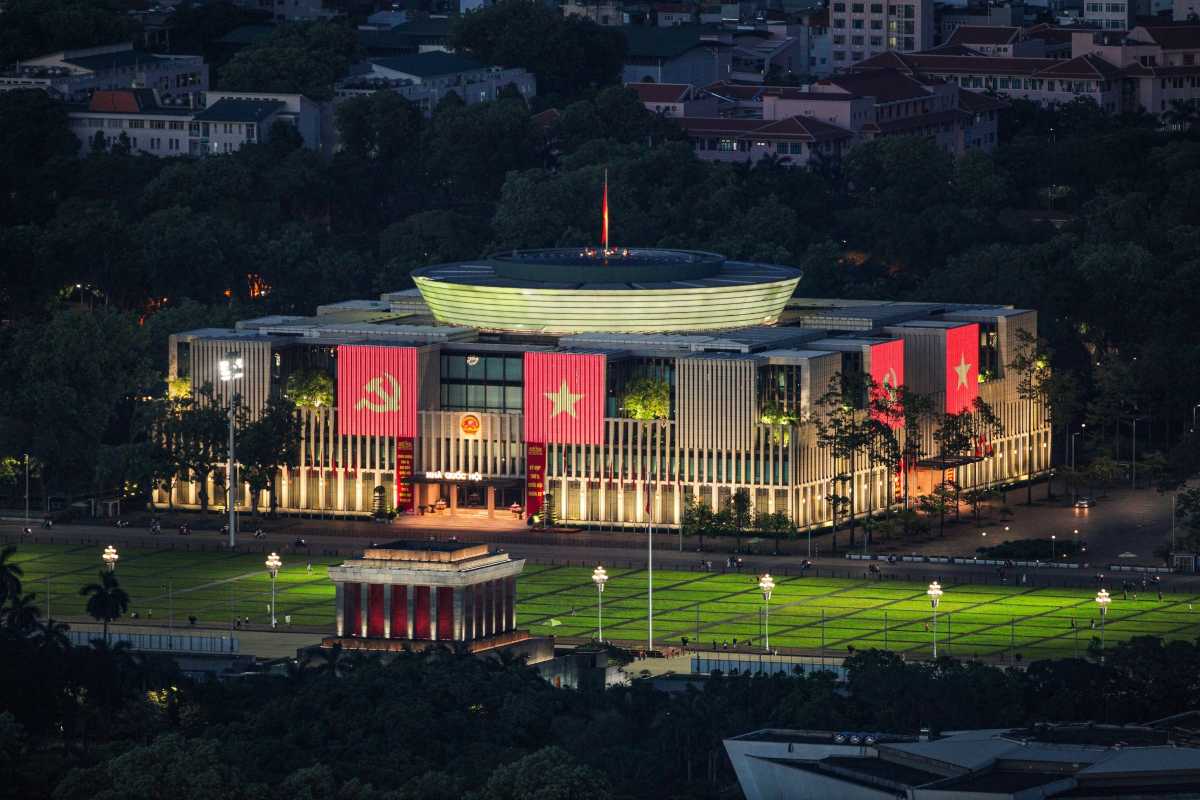
Visitor Information and Practical Travel Guide
The Ho Chi Minh Mausoleum is a must-visit cultural landmark in Hanoi’s Ba Dinh District. To plan your visit effectively, it is essential to know the location, opening hours, entrance fees, visitor rules, and available facilities. This guide provides clear and practical information to help you navigate your trip smoothly and make the most of your experience.
Understanding transportation options, seasonal closures, and visitor amenities ensures your visit to the Ho Chi Minh Mausoleum is convenient and enjoyable.
Prepare for your visit with confidence by reviewing these key details.
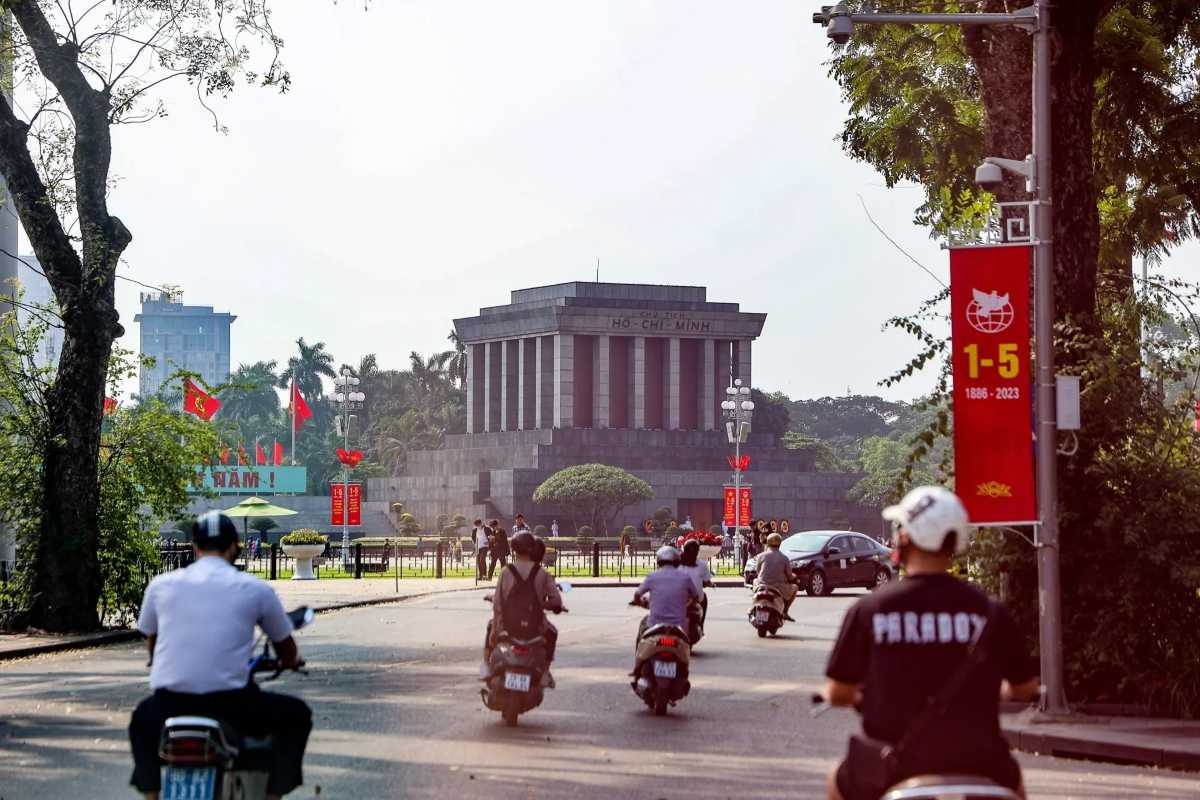
Location and How to Get There
Knowing exactly how to get to the Ho Chi Minh Mausoleum helps you plan your journey with ease. Located in the heart of Ba Dinh District, the mausoleum is accessible by various transportation methods.
How to get to Ho Chi Minh Mausoleum includes public buses, taxis, and walking routes. Each offers reliable access depending on your starting point and preferences.
Explore your options to reach the mausoleum comfortably and efficiently.
Official address and geographic context
The Ho Chi Minh Mausoleum is situated at 2 Hung Vuong Street, Ba Dinh District, Hanoi. It lies within the famous Ba Dinh Square, a historical and political hub in Vietnam’s capital.
This precise address helps you confirm your destination and aids in planning transport or navigation.
Knowing the mausoleum’s geographic context enhances your understanding of its cultural significance within Hanoi.
Transportation options (public buses, taxis, walking routes)
To reach the Ho Chi Minh Mausoleum, consider the following transit methods:
- Public buses: Several routes serve Ba Dinh District, providing affordable access to the mausoleum.
- Taxis and ride-hailing services like Grab: Convenient for direct travel, especially from distant parts of Hanoi.
- Walking: If you stay nearby, walking is an enjoyable way to experience the area and explore adjacent landmarks.
These transportation options offer flexibility to suit your schedule and preferences.
Choose the method that best fits your itinerary for a hassle-free visit to the Ho Chi Minh Mausoleum.
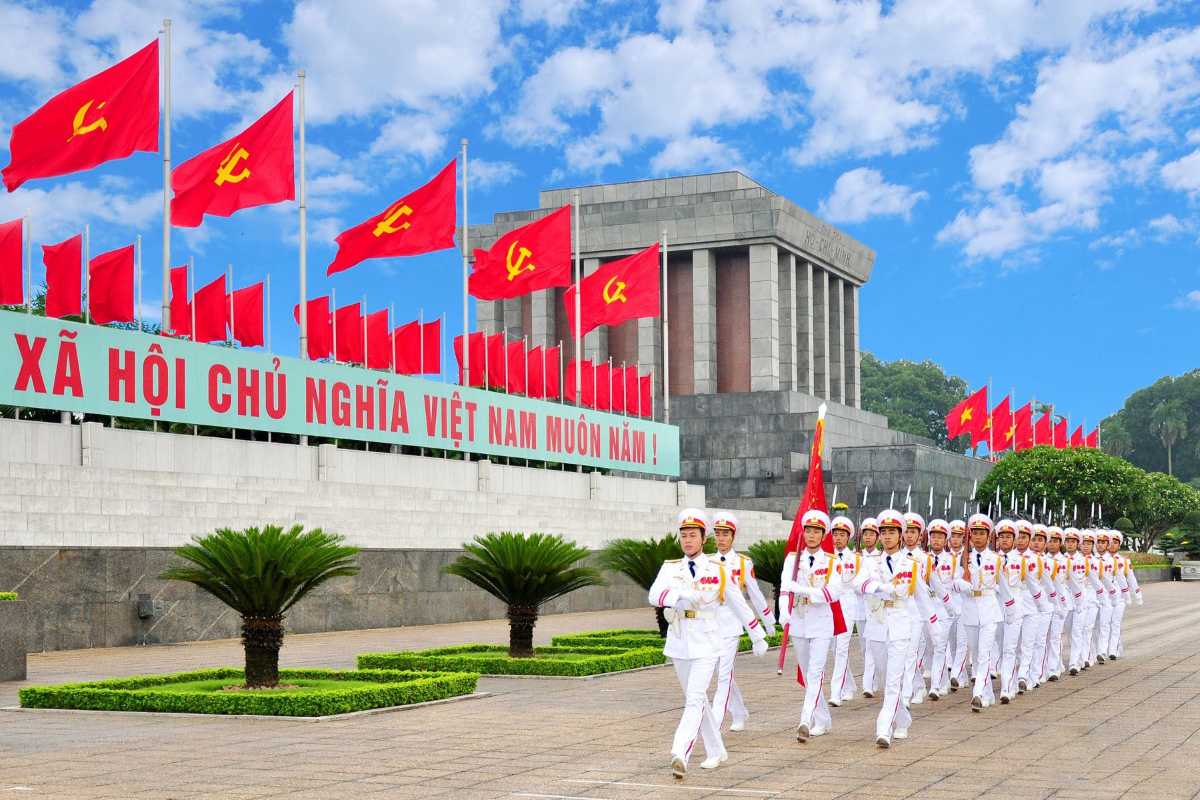
Opening Hours and Seasonal Considerations
The Ho Chi Minh Mausoleum opening hours are structured to accommodate visitors throughout the week, with specific days reserved for maintenance closures. Knowing these times helps you plan your visit to avoid inconvenience.
Understanding when the mausoleum is closed and the best time to visit enhances your experience and ensures you see the site at its best.
Plan your visit around these schedules for an optimal experience at the Ho Chi Minh Mausoleum.
Days open and closed (maintenance closures)
The Ho Chi Minh Mausoleum operates on a schedule that includes regular closures:
- Closed on Mondays and Fridays for maintenance and cleaning.
- Open Tuesday to Thursday and weekends, allowing ample visiting opportunities.
- Special closures may occur on national holidays or significant political events.
These closures ensure the site remains well-preserved and respectful for all visitors.
Avoid closed days by planning your visit accordingly to the Ho Chi Minh Mausoleum schedule.
Best times and seasons to visit
The best time to visit the Ho Chi Minh Mausoleum is during the cooler months from October to April, when Hanoi experiences mild weather. Visiting early in the morning or late afternoon helps you avoid crowds and the midday heat.
Peak tourist seasons around national holidays may bring larger crowds, so consider weekdays for a quieter experience.
Timing your visit thoughtfully will maximize comfort and allow you to fully appreciate the mausoleum and surrounding sites.
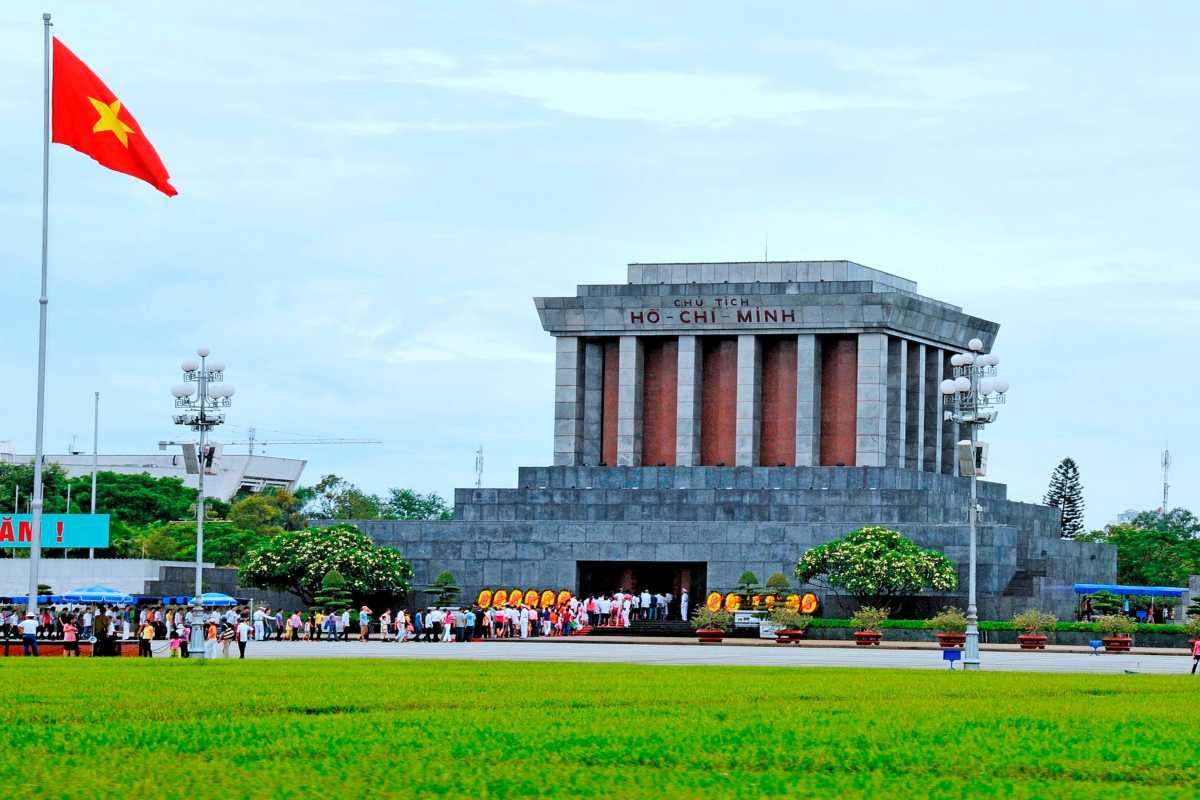
Entrance Fees and Visitor Rules
Understanding the Ho Chi Minh Mausoleum entrance fee and visitor guidelines is essential for a smooth visit. Admission policies and behavioral rules help maintain respect for this revered site.
Clear knowledge of entrance fees, dress codes, and photography restrictions ensures you are well-prepared and avoid any surprises during your visit.
Follow these guidelines to fully enjoy your experience at the Ho Chi Minh Mausoleum.
Admission policies and free entry
The Ho Chi Minh Mausoleum offers free entry to all visitors, reflecting its status as a national monument.
- Visitors must present valid identification for entry during busy periods.
- Entry is subject to security screening to ensure safety.
- Group visits may require prior coordination during peak times.
These policies facilitate orderly access and preservation of the site.
Prepare your documents and arrive early for a hassle-free visit to the Ho Chi Minh Mausoleum.
Dress code and behavioral guidelines
Visitors are expected to observe respectful attire and conduct:
- Dress modestly; avoid sleeveless shirts, shorts, or revealing clothing.
- Maintain silence and decorum inside the mausoleum.
- Photography is prohibited inside the main hall.
- Follow instructions from guards and staff at all times.
Adhering to these rules honors the solemnity of the site and local customs.
Respect the Ho Chi Minh Mausoleum guidelines for a meaningful visit.
Security and photography restrictions
Security measures and photography rules include:
- No photography or video recording inside the mausoleum building.
- Bags and large items are subject to inspection or restricted entry.
- Food, drinks, and smoking are strictly forbidden on the premises.
- Visitors must comply with security personnel directions promptly.
These regulations protect the site and enhance visitor safety.
Comply with the Ho Chi Minh Mausoleum photography rules for an uninterrupted visit.
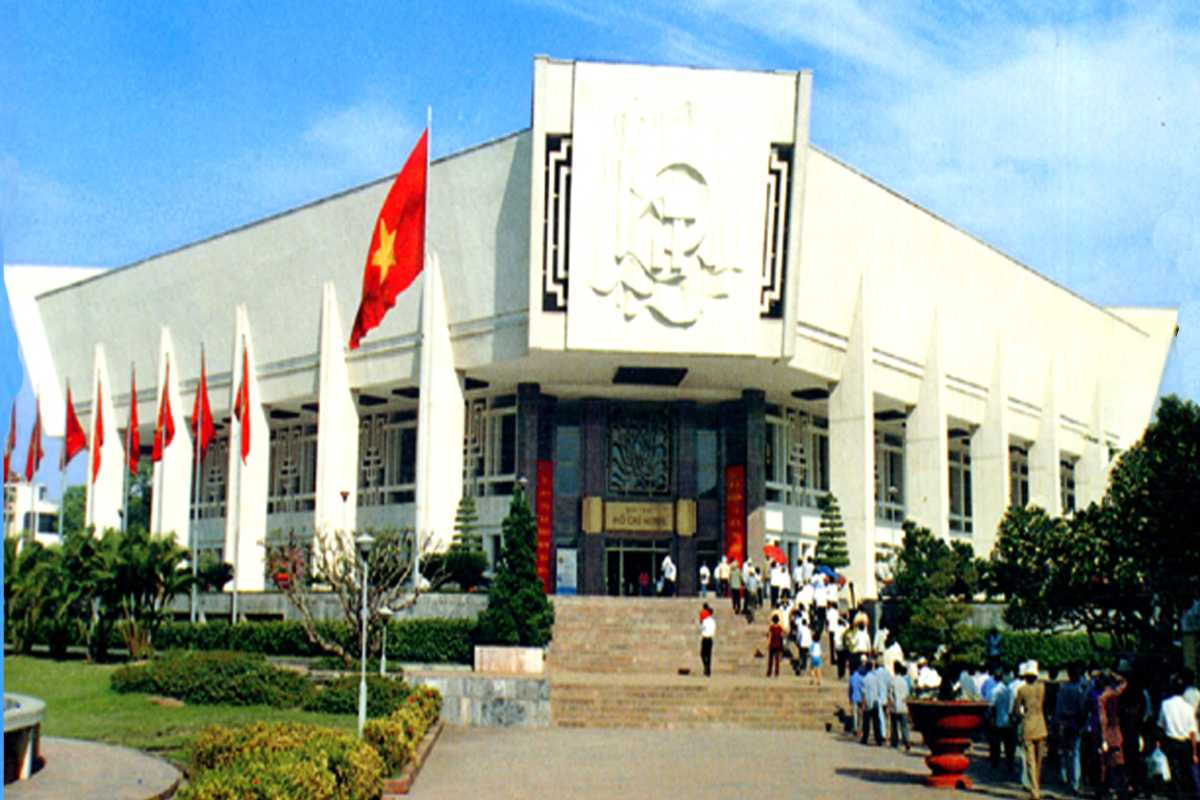
Accessibility and Facilities
The Ho Chi Minh Mausoleum accessibility ensures that visitors with different needs can comfortably explore this historic site. Clear information on physical access and visitor amenities helps you prepare for a smooth visit.
Facilities such as wheelchair access and nearby conveniences contribute to an inclusive experience for all guests.
Plan your visit knowing the Ho Chi Minh Mausoleum offers practical amenities designed for visitor comfort.
Wheelchair access and visitor amenities
Accessibility features at the Ho Chi Minh Mausoleum include:
- Ramps and smooth pathways for wheelchair users to navigate the grounds easily.
- Designated seating areas and rest spots for visitors with limited mobility.
- Staff assistance available upon request to support those needing help.
- Accessible entrances and restrooms equipped to accommodate special needs.
These provisions ensure all visitors can experience the mausoleum with ease.
Confirm your accessibility needs are met before your visit to the Ho Chi Minh Mausoleum.
Nearby services (restrooms, cafes, guides)
Convenient services near the Ho Chi Minh Mausoleum include:
- Public restrooms located close to the mausoleum entrance for visitor use.
- Cafes and small eateries nearby where you can enjoy refreshments before or after your visit.
- Licensed tour guides offering rich historical context and personalized tours.
- Souvenir shops selling memorabilia and cultural items related to the mausoleum.
These amenities enhance your visit and provide comfort during your exploration.
Utilize these nearby services to make your Ho Chi Minh Mausoleum visit more enjoyable.
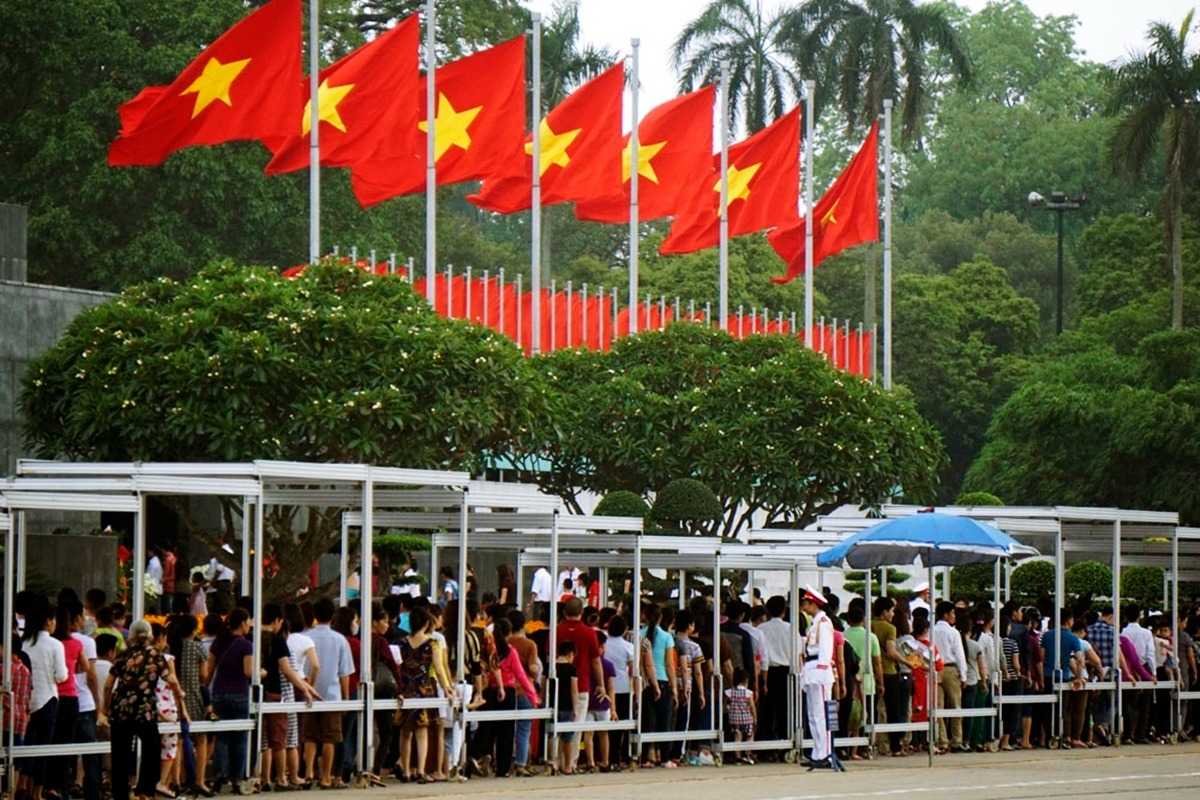
Things to See and Do at the Mausoleum
The Ho Chi Minh Mausoleum offers a range of memorable experiences that highlight Vietnam’s rich cultural and historical heritage. From viewing the embalmed body of Ho Chi Minh to exploring nearby gardens and historic sites, visitors have many opportunities to engage deeply with the site.
This section guides you through the key attractions and activities to include in your visit itinerary for a fulfilling and respectful experience.
Plan your visit to the Ho Chi Minh Mausoleum to enjoy these iconic landmarks and cultural insights.
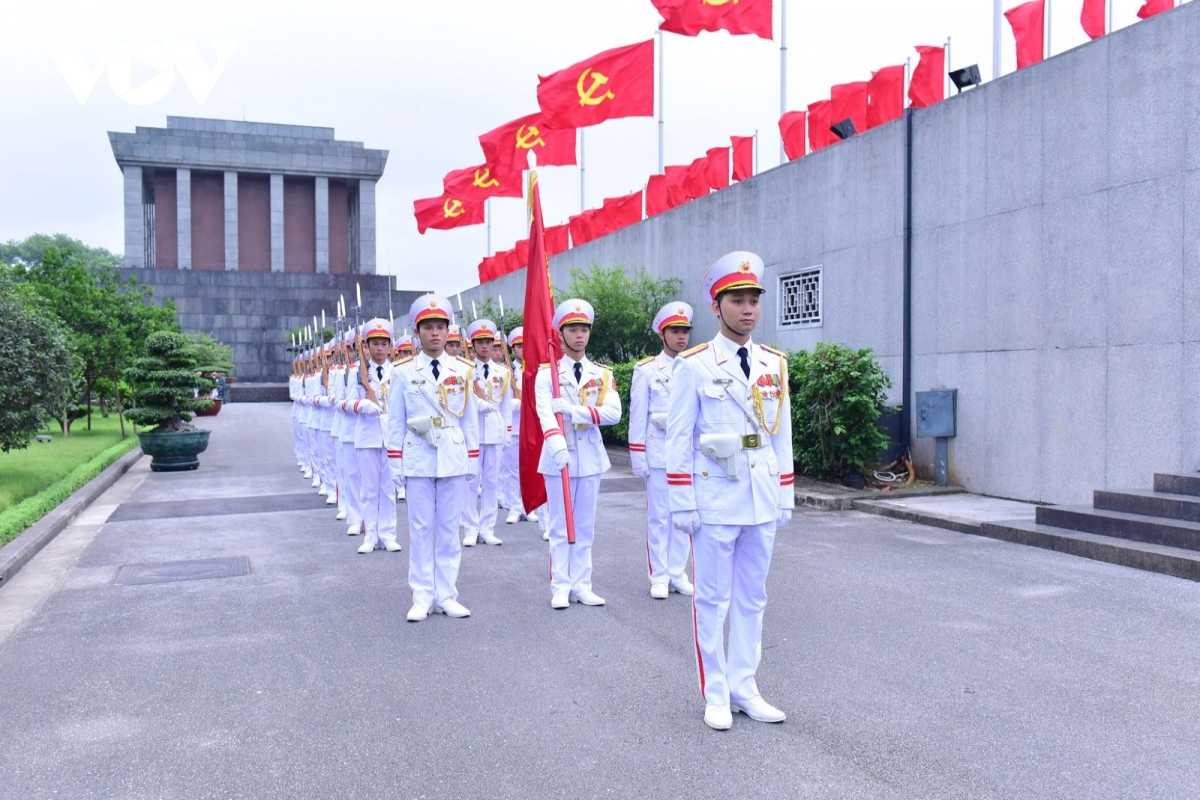
Viewing the Embalmed Body of Ho Chi Minh
Viewing the embalmed body of Ho Chi Minh is a solemn experience that requires respectful observance of mausoleum protocols. Visitors must follow strict etiquette to maintain the dignity of the site.
Understanding the rules inside the Ho Chi Minh Mausoleum helps you prepare mentally and physically for this unique moment.
Respect the guidelines to ensure a smooth and meaningful visit.
Etiquette and rules inside the mausoleum
Visitors must observe the following etiquette inside the Ho Chi Minh Mausoleum:
- Maintain silence and avoid loud conversations to preserve the solemn atmosphere.
- Do not take photos or videos inside the mausoleum building.
- Dress modestly, with no hats or sunglasses permitted inside.
- Follow instructions from the guards and staff at all times.
Adhering to these rules respects the memory of Ho Chi Minh and the cultural importance of the mausoleum.
Comply with the Ho Chi Minh Mausoleum etiquette to honor this revered site.
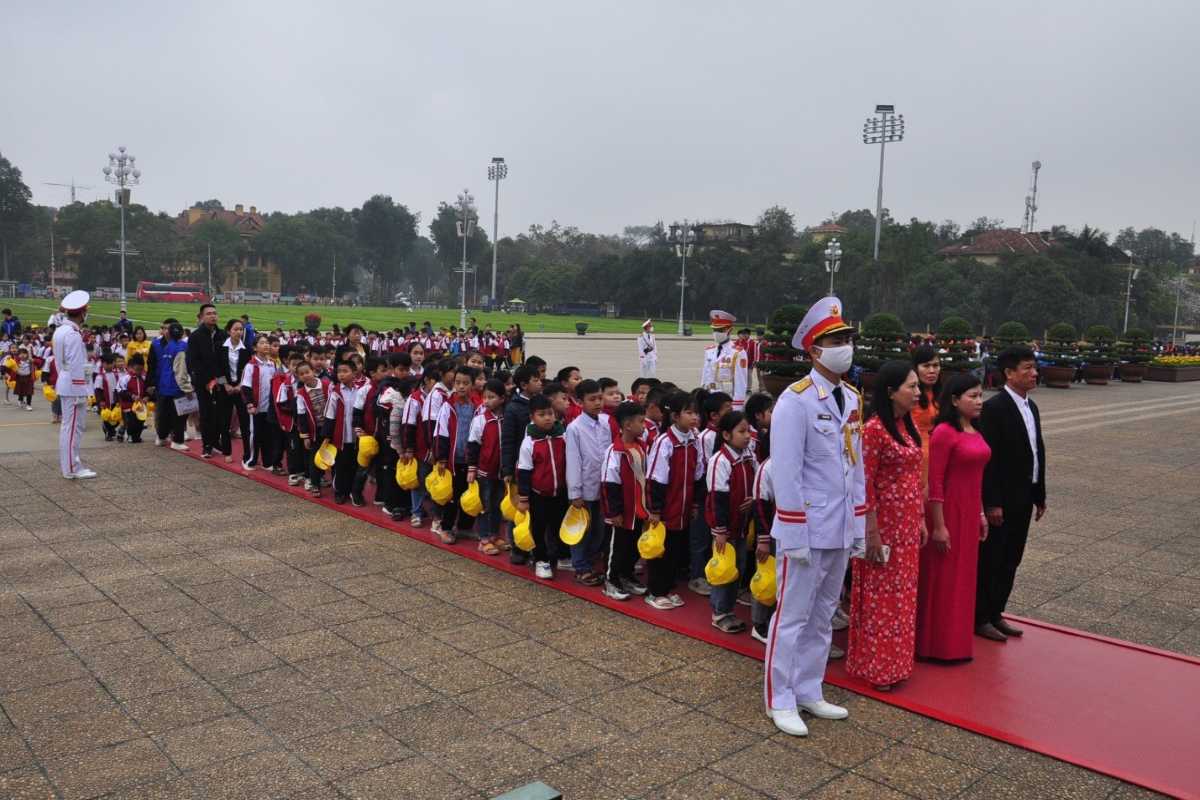
Changing of the Guard Ceremony
The Changing of the Guard Ho Chi Minh Mausoleum is a captivating ritual that draws many visitors eager to witness this symbol of respect and discipline. Understanding the ceremony’s schedule and significance enhances your appreciation of its cultural importance.
This ceremony offers a unique glimpse into Vietnam’s dedication to honoring Ho Chi Minh and serves as a highlight for many travelers.
Plan your visit to experience the Ho Chi Minh Mausoleum guard ceremony firsthand.
Schedule and significance of the ceremony
The guard ceremony at the Ho Chi Minh Mausoleum follows a regular schedule:
- Takes place hourly from 7:00 AM to 10:00 AM daily except Mondays and Fridays.
- Involves a precise exchange of guards symbolizing vigilance and honor.
- Reflects Vietnam’s deep respect for its revolutionary leader.
- Draws large crowds, so arrive early for the best viewing spots.
Understanding this schedule helps you plan your visit to witness the ceremony without missing this culturally rich event.
Don’t miss the Ho Chi Minh Mausoleum guard ceremony schedule during your visit.

Exploring Ba Dinh Square and Surrounding Gardens
The Ba Dinh Square attractions offer visitors a chance to experience Vietnam’s historic heart beyond the mausoleum’s interior. The expansive square and surrounding gardens provide tranquil spots perfect for reflection and stunning photography.
Exploring these outdoor areas enhances your visit, allowing you to connect with Vietnamese culture in a peaceful and picturesque setting.
Discover the beauty and significance of Ba Dinh Square during your trip to the mausoleum.
Photographic opportunities and tranquil spots
Visitors to Ba Dinh Square will find several ideal locations for photography and quiet moments:
- The central flagpole area framed by historic buildings creates a classic Vietnamese backdrop.
- The lush gardens surrounding the square offer shaded, peaceful spots for relaxation.
- Statues and monuments provide cultural photo subjects rich in symbolism.
- Early morning or late afternoon light enhances the ambiance and photo quality.
These spots offer a balance of vibrant history and serene nature for memorable experiences.
Plan time to enjoy the Ba Dinh Square photography opportunities during your visit.
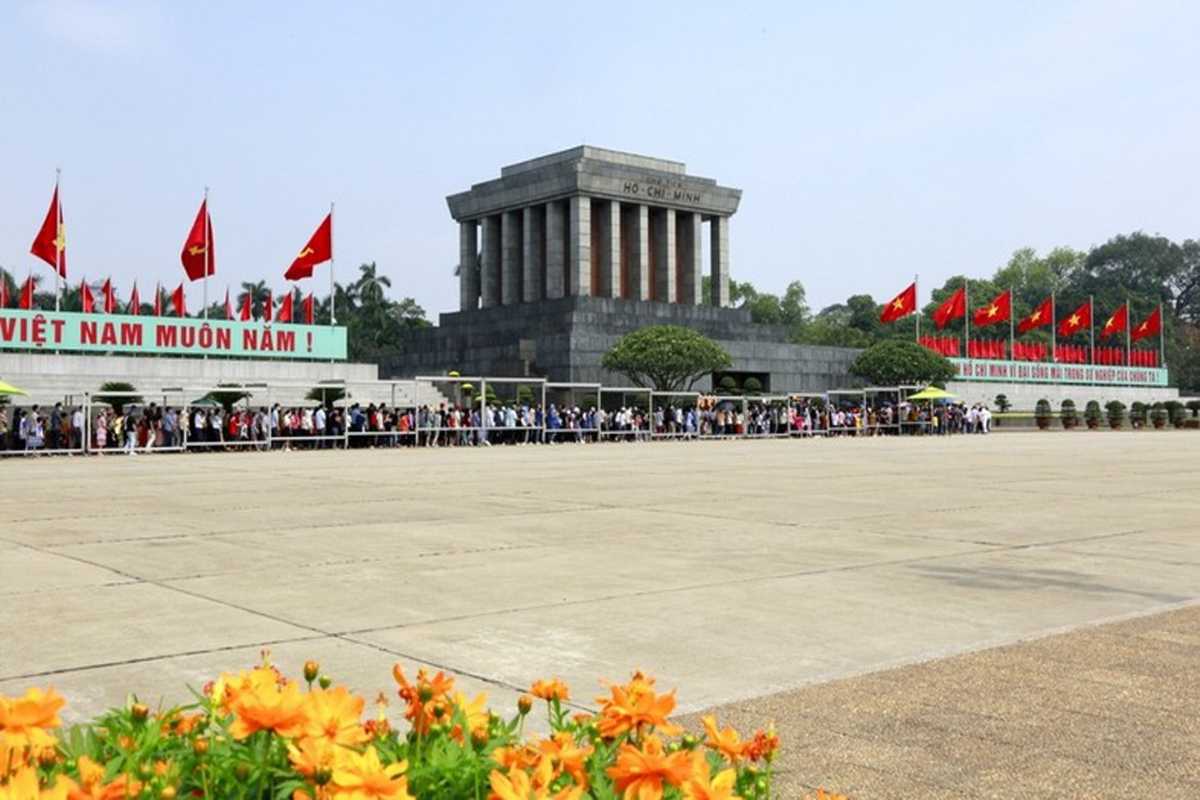
Visiting Adjacent Historical Sites
Exploring nearby landmarks like the Ho Chi Minh Stilt House and the One Pillar Pagoda enriches your cultural experience around the mausoleum. These sites provide deeper insight into Vietnam’s history and architectural heritage.
Including visits to these attractions and local museums in your itinerary offers a comprehensive understanding of Hanoi’s rich past.
Plan your cultural journey to cover these important destinations near the Ho Chi Minh Mausoleum.
Ho Chi Minh’s Stilt House and Presidential Palace
The Ho Chi Minh Stilt House is a preserved wooden structure where Ho Chi Minh lived and worked from 1958 until his death. It offers a glimpse into his simple lifestyle and dedication to the Vietnamese people.
Adjacent to it is the Presidential Palace, a French colonial building used by leaders for official events. The contrast between the two highlights historical shifts in Vietnam.
Visiting these sites provides valuable context for the Ho Chi Minh Mausoleum and the leader’s life.
One Pillar Pagoda
The One Pillar Pagoda is an iconic Buddhist temple located near the mausoleum. Its unique architecture, resembling a lotus flower rising from the water, symbolizes purity and enlightenment.
This historic temple is a must-see for visitors interested in Vietnamese religious culture and traditional architecture.
Include the One Pillar Pagoda in your Hanoi itinerary for a memorable cultural experience.
Nearby museums and cultural centers
For history enthusiasts, several museums near the Ho Chi Minh Mausoleum offer enriching visits:
- Vietnam Museum of Ethnology: Showcases the diverse ethnic groups of Vietnam through artifacts and exhibitions.
- Vietnam History Museum: Offers comprehensive displays on Vietnam’s rich past from ancient times to modern history.
- Additional cultural centers nearby provide rotating exhibitions and educational programs.
These museums complement your visit and deepen your understanding of Vietnam’s heritage.
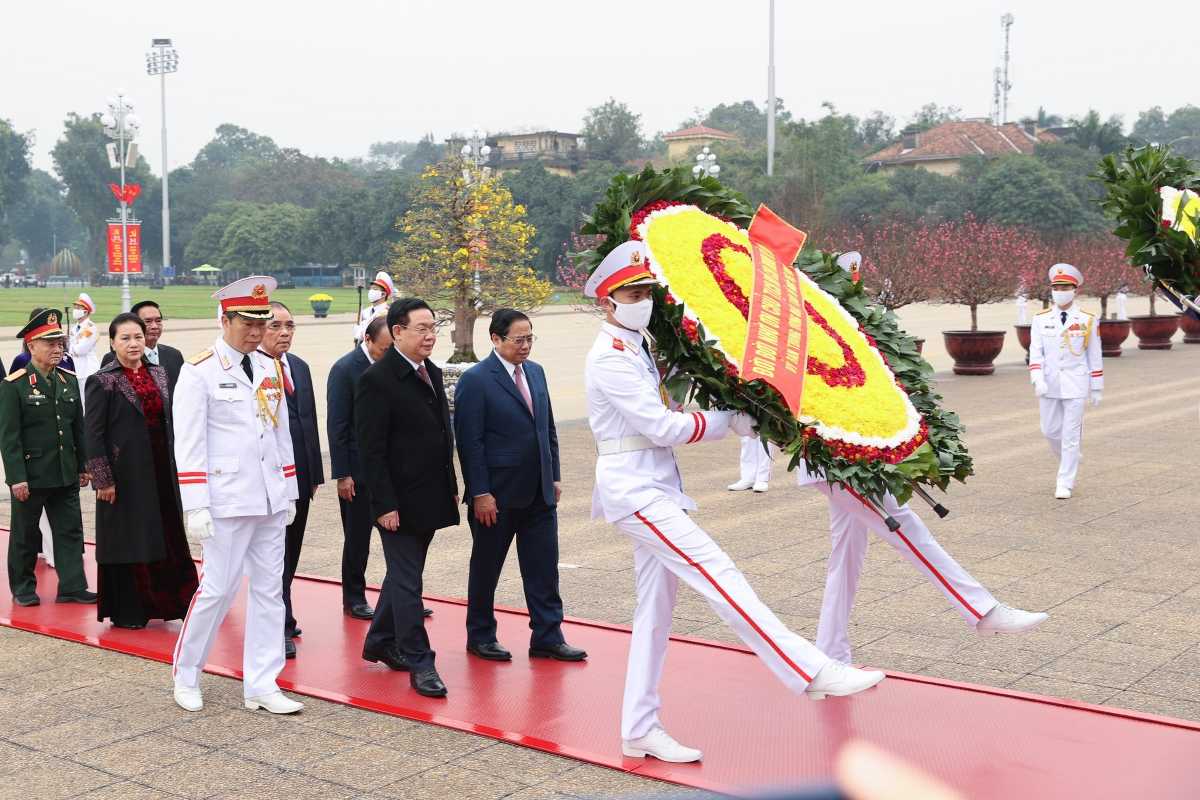
Guided Tours and Visitor Experiences
The Ho Chi Minh Mausoleum guided tours offer visitors various ways to explore this historic site, from private tours to audio guides and self-guided visits. Understanding your options helps you tailor your experience and make the most of your time in Hanoi.
Booking platforms, tour types, and visitor advice empower you to choose the best fit for your travel style and ensure a memorable visit to the Ho Chi Minh Mausoleum.
Explore available tours and tips to enrich your journey.
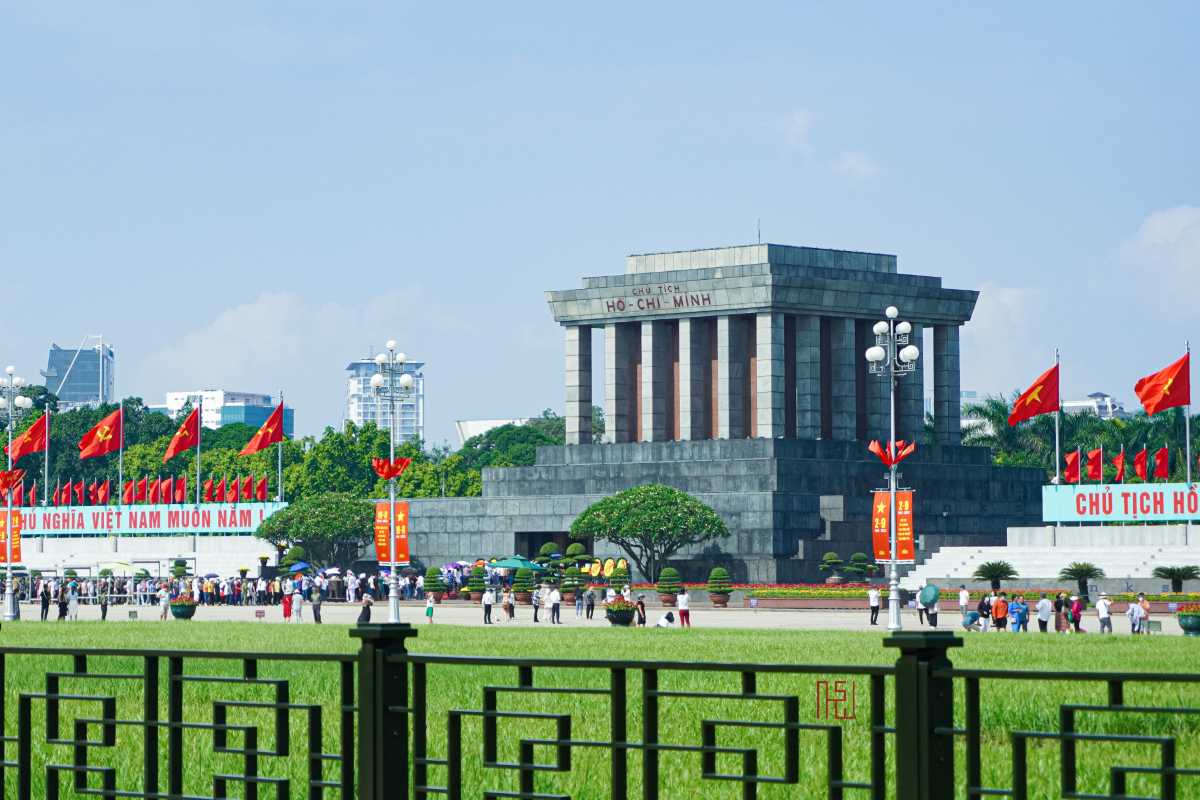
Types of Tours Available
Visitors to the Ho Chi Minh Mausoleum can choose from different tour formats based on their preferences:
- Group guided tours: Provide expert commentary and social experience.
- Private tours: Offer personalized attention and flexible itineraries.
- Audio guides: Allow independent exploration with detailed information.
- Self-guided visits: Enable flexible pacing and spontaneous discovery.
Each option caters to different needs, whether you prefer structured guidance or independent exploration.
Consider your travel style when selecting between private tours or audio guide options at the Ho Chi Minh Mausoleum.
Group guided tours vs private tours
Choosing between group and private tours involves weighing these factors:
- Group guided tours: Lower cost, fixed schedules, opportunities to meet other travelers.
- Private tours: Customized experience, flexible timing, more direct interaction with the guide.
- Group tours may be less flexible but offer a lively atmosphere.
- Private tours are ideal for those seeking privacy or specific interests.
Evaluate your preferences and budget to decide the best tour style for your visit to the Ho Chi Minh Mausoleum.
Audio guide options and self-guided visits
Independent visitors can benefit from:
- Audio guides available via rental or app, offering detailed commentary at your own pace.
- Self-guided visits allow you to explore without time constraints or group dynamics.
- Audio guides often include historical context, architectural details, and cultural insights.
- Self-guided options suit travelers comfortable navigating with maps and information.
These alternatives provide flexibility while ensuring a rich educational experience at the Ho Chi Minh Mausoleum.
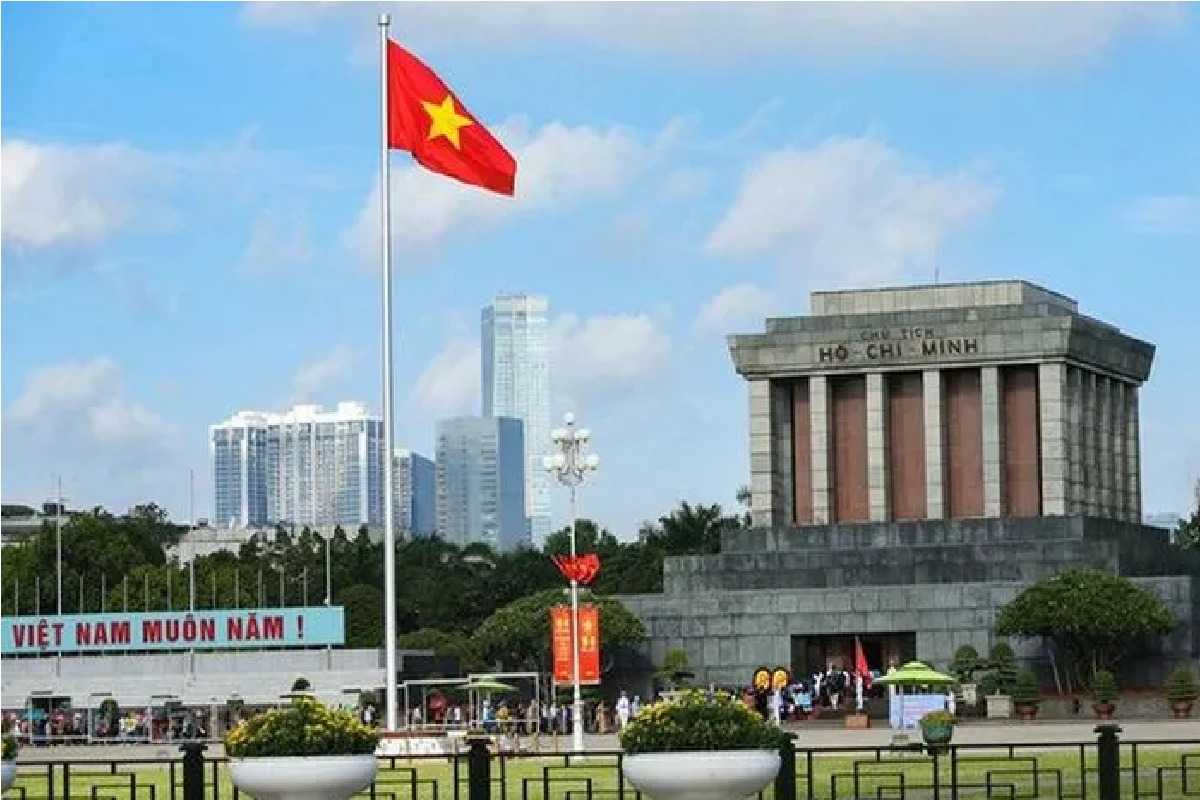
Booking and Pricing Information
Booking tours for the Ho Chi Minh Mausoleum is straightforward with various trusted platforms offering online reservations. Understanding the pricing helps you plan your visit effectively and avoid surprises.
Make sure to book through reputable operators to ensure a seamless experience and secure your preferred tour date.
Recommended tour operators and platforms
Booking your tour with trustworthy providers ensures a smooth and enjoyable visit to the Ho Chi Minh Mausoleum. Here are some of the most reliable platforms and companies available in Hanoi:
- Asia Travel Links: A reliable provider offering personalized and well-organized tours to the Ho Chi Minh Mausoleum.
- Klook: A global booking platform known for diverse tour options and user reviews.
- GetYourGuide: Offers multiple tour packages with easy booking and cancellation policies.
- Local Hanoi agencies: Trusted for cultural tours and historical expertise.
Choosing the right operator helps you plan confidently for your visit.
Cost ranges and inclusions
Understanding the typical pricing and what is included in tours to the Ho Chi Minh Mausoleum helps you budget accordingly and choose the best value option:
- Group tours: Typically cost between $15 and $30 per person, usually including entrance fees and a guided experience.
- Private tours: Range from $50 to over $100, offering flexible schedules and tailored itineraries.
- Some tours include extras like audio guides, transportation, and visits to nearby attractions.
- Self-guided and audio guide options can be more budget-friendly or free at the site.
Review the inclusions carefully to find the tour that suits your preferences and budget.

Insider Tips for a Better Visit
To make the most of your trip to the Ho Chi Minh Mausoleum, it’s helpful to know some insider tips that can enhance your experience and avoid common pitfalls. These suggestions will help you navigate the site smoothly and respectfully.
Being prepared with timing strategies and cultural knowledge will ensure your visit is both comfortable and meaningful.
Avoiding crowds and peak times
Visiting during less busy hours can significantly improve your experience at the Ho Chi Minh Mausoleum. Consider these timing tips:
- Early mornings on weekdays: Typically fewer visitors and cooler temperatures.
- Avoid national holidays and weekends: These times tend to be crowded.
- Plan your visit outside of maintenance closure periods for uninterrupted access.
- Arrive before the Changing of the Guard ceremony for a less congested experience.
Timing your visit well will help you enjoy the site in a calm and respectful atmosphere.
Cultural etiquette and engaging with guides
Respecting local customs and interacting appropriately with guides enriches your visit to the Ho Chi Minh Mausoleum:
- Dress modestly according to the dress code to show respect.
- Speak quietly and avoid disruptive behavior inside the mausoleum.
- Listen attentively to guides to learn deeper cultural insights.
- Ask questions politely and engage with guides to enhance understanding.
- Follow all site rules, including photography restrictions.
Observing these cultural norms will help you have a rewarding and respectful visit.

Cultural Significance and Preservation Efforts
The Cultural Significance and Preservation Efforts surrounding the Ho Chi Minh Mausoleum reflect its vital role as a symbol of national pride and identity in Vietnam. This landmark embodies the revolutionary spirit and cultural heritage of the country, making it an essential site for both locals and visitors. Ongoing conservation initiatives by the government and community groups ensure that the mausoleum and the embalmed body of Ho Chi Minh are preserved with the utmost care, maintaining their historical and cultural integrity for future generations. Educational programs and special commemorations also play a significant part in raising awareness of the legacy of Ho Chi Minh and fostering appreciation among visitors. Exploring these efforts offers a deeper understanding of the mausoleum’s place in Vietnamese history and culture.
Plan your visit to the Ho Chi Minh Mausoleum to witness a site rich in cultural heritage and preservation excellence.

Role in Vietnamese National Identity
The Ho Chi Minh Mausoleum stands as a powerful emblem of Vietnamese national identity, embodying the revolutionary history and cultural values that have shaped the nation. This monument symbolizes the enduring pride and unity of the Vietnamese people, reflecting their deep respect for Ho Chi Minh and the ideals he championed. The mausoleum is more than just a resting place; it represents the revolutionary spirit that fueled the country’s fight for independence and continues to inspire national pride. Understanding this cultural symbolism helps visitors connect emotionally with the site and appreciate its importance beyond its physical presence.
Discover how the Ho Chi Minh Mausoleum plays a central role in fostering Vietnamese national pride and cultural identity.

Government and Community Conservation Initiatives
Active conservation of the Ho Chi Minh Mausoleum involves coordinated efforts between government agencies and local communities dedicated to preserving this historic site. These initiatives include:
- Regular maintenance of the mausoleum’s structure and grounds to ensure longevity and safety.
- Scientific preservation techniques applied to the embalmed body of Ho Chi Minh to maintain its condition.
- Strict security regulations to protect both the monument and its visitors.
- Cultural preservation programs that promote awareness and respect for the site.
- Engagement with the community through heritage education and conservation campaigns.
These combined efforts demonstrate a strong commitment to safeguarding Vietnam’s cultural legacy and ensuring that the mausoleum remains a respected national treasure.
Learn more about the conservation efforts that keep the Ho Chi Minh Mausoleum preserved for future generations.
Maintenance of the mausoleum and embalmed body
Maintaining the Ho Chi Minh Mausoleum and the embalmed body of Ho Chi Minh involves meticulous scientific and cultural practices:
- Use of advanced embalming and preservation techniques developed by specialists.
- Regular structural inspections and repairs to the mausoleum building.
- Climate control systems inside the mausoleum to protect the body from deterioration.
- Cultural rituals and protocols observed to honor the mausoleum’s significance.
- Collaboration between scientists, historians, and conservation experts.
These efforts ensure the mausoleum remains a well-preserved site of reverence and history.
Experience the care and dedication behind the Ho Chi Minh Mausoleum’s preservation and the respect for Ho Chi Minh’s legacy.
Environmental and security regulations
To safeguard the Ho Chi Minh Mausoleum and its visitors, strict environmental and security regulations are enforced:
- Policies to minimize environmental impact on the surrounding area.
- Controlled visitor access to reduce wear and maintain tranquility.
- Security measures including surveillance and staff presence for safety.
- Guidelines to protect the mausoleum’s physical integrity.
- Promotion of sustainable tourism practices to balance visitation and preservation.
These regulations maintain a secure and respectful environment for all who come to honor this national monument.
Respecting these regulations helps preserve the Ho Chi Minh Mausoleum as a cultural and historical landmark.

Educational and Cultural Programs
The Ho Chi Minh Mausoleum offers a range of educational and cultural programs designed to deepen visitor understanding of Ho Chi Minh’s legacy and Vietnam’s rich heritage. These initiatives include exhibitions, guided tours, and informational materials that provide historical context and cultural insights. Through these programs, visitors can engage more meaningfully with the site, gaining a greater appreciation for its national significance and the revolutionary history it represents. Special events and commemorations held at the mausoleum further enrich the cultural experience, highlighting key moments in Vietnam’s history and traditions.
Explore the educational and cultural programs at the Ho Chi Minh Mausoleum to enhance your visit with deeper historical insights and cultural appreciation.
Visitor education on Ho Chi Minh’s legacy
Visitor education at the Ho Chi Minh Mausoleum includes a variety of efforts aimed at fostering cultural awareness and historical understanding:
- Exhibitions showcasing Ho Chi Minh’s life and contributions to Vietnam’s independence.
- Guided tours that offer detailed storytelling about the mausoleum and revolutionary history.
- Informational materials such as brochures and displays to support self-guided learning.
- Educational programs tailored to schools and special interest groups.
- Cultural interpretation that connects visitors with the broader heritage of Vietnam.
These efforts help visitors engage thoughtfully with the mausoleum’s legacy and appreciate its enduring cultural importance.
Plan your visit to include educational activities at the Ho Chi Minh Mausoleum for a richer experience.
Special events and commemorations
The Ho Chi Minh Mausoleum hosts several important annual events that commemorate historical milestones and celebrate Vietnam’s cultural heritage:
- National celebrations honoring Ho Chi Minh’s birthday and death anniversary.
- Remembrance ceremonies paying tribute to revolutionary achievements.
- Cultural festivals that highlight traditional Vietnamese customs and arts.
- Public programs during key national holidays that attract locals and tourists alike.
- Special exhibitions timed to historical anniversaries and cultural observances.
These events offer unique opportunities to witness living traditions and participate in national remembrance.
Consider timing your visit to the Ho Chi Minh Mausoleum to coincide with special events for a memorable cultural experience.

Nearby Attractions and Suggested Itineraries
The Nearby Attractions Ho Chi Minh Mausoleum offer a rich tapestry of cultural and historical experiences that can enhance your visit to Hanoi. Exploring beyond the mausoleum allows you to discover iconic landmarks such as the Temple of Literature and the Vietnam Museum of Ethnology. Whether you prefer walking or cycling, several recommended routes connect these sites seamlessly, making it easy to plan half-day or full-day itineraries. Along the way, you can savor local cuisine and browse vibrant markets, immersing yourself in the authentic flavors and sights of the city.
Plan your visit to include these Nearby Attractions Ho Chi Minh Mausoleum for a comprehensive and enriching Hanoi experience.

Key Nearby Cultural and Historical Sites
Close to the Ho Chi Minh Mausoleum, you will find several cultural sites that showcase Vietnam’s rich heritage. The Temple of Literature stands as a historic symbol of education and Confucian values. The Vietnam Museum of Ethnology offers deep insights into the diverse ethnic groups of the country. These landmarks are must-visits for travelers interested in history and culture, providing a broader understanding of the region’s past and present.
Discover these Cultural sites near Ho Chi Minh Mausoleum to expand your Hanoi itinerary with meaningful experiences.
Temple of Literature
The Temple of Literature is one of Hanoi’s most revered historic sites, dating back to 1070. It served as the country’s first university and remains a testament to Vietnam’s long-standing respect for education and scholarship. Visitors can admire its traditional architecture, peaceful gardens, and ancient stone steles. This site offers a serene escape and a glimpse into the scholarly traditions that shaped Vietnamese culture.
Include the Temple of Literature in your itinerary to connect with Vietnam’s intellectual heritage.
Vietnam Museum of Ethnology
The Vietnam Museum of Ethnology presents an extensive collection of artifacts and exhibits dedicated to the 54 ethnic groups of Vietnam. It offers an engaging educational experience through indoor displays and outdoor cultural villages. Visitors can learn about traditional crafts, lifestyles, and customs, gaining a deeper appreciation for the country’s cultural diversity.
Plan a visit to the Vietnam Museum of Ethnology to enrich your understanding of Vietnam’s ethnic mosaic.

Recommended Walking and Cycling Routes
Exploring Hanoi by foot or bike offers a unique way to connect with the city’s vibrant life and historic charm. Several Walking routes Hanoi and Cycling routes Hanoi link the Ho Chi Minh Mausoleum with the bustling Old Quarter Hanoi and other notable landmarks. These routes combine scenic views, urban exploration, and visits to historic neighborhoods, making your travel both efficient and memorable.
Discover routes connecting mausoleum with Old Quarter to enjoy a well-planned and culturally rich journey through Hanoi.
Routes connecting mausoleum with Old Quarter and other landmarks
For a smooth and scenic travel experience, consider these recommended paths:
- Walking Route via Ba Dinh Square: Pass through the serene Ba Dinh Square, enjoy views of government buildings, and continue toward the Old Quarter Hanoi for bustling markets and street life.
- Cycling Path along Hoan Kiem Lake: A picturesque ride circling the lake, offering tranquil spots and historical sites en route to the mausoleum and beyond.
- Mixed Route Including Temple of Literature: Combine walking and cycling by visiting the Temple of Literature and other nearby cultural landmarks between the mausoleum and the Old Quarter Hanoi.
- Guided Urban Exploration Tours: Join local guides who offer curated walking or cycling tours highlighting hidden gems and historical contexts around the mausoleum area.
These routes connecting mausoleum with Old Quarter provide diverse options to tailor your exploration to your preferences and pace.

Sample Half-Day and Full-Day Itineraries
Planning your time effectively allows you to experience the best of Hanoi while visiting the Ho Chi Minh Mausoleum. A Hanoi half-day itinerary or Hanoi full-day itinerary can help you combine this iconic site with other nearby highlights. These itineraries maximize your visit, balancing cultural landmarks and local experiences to make the most of your time.
Explore ideas for combining mausoleum visit with other Hanoi highlights to create a memorable and efficient travel plan.
Combining the mausoleum visit with other Hanoi highlights
To enrich your visit, consider including these attractions:
- The Temple of Literature: Vietnam’s first national university offers a glimpse into the country’s scholarly past and serene gardens.
- The Vietnam Museum of Ethnology: Explore the diverse cultures of Vietnam’s ethnic groups through exhibits and traditional houses.
- Old Quarter Hanoi: Wander through lively streets filled with shops, markets, and historic architecture.
- One Pillar Pagoda: A unique Buddhist temple located near the mausoleum, rich in history and cultural symbolism.
- Ba Dinh Square: The grand public square surrounding the mausoleum, perfect for photo opportunities and leisurely strolls.
Including these spots allows you to experience the cultural richness surrounding the Ho Chi Minh Mausoleum.
Food and local market recommendations
No visit to Hanoi is complete without savoring local flavors. Near the Ho Chi Minh Mausoleum, you can find authentic food markets and dining spots:
- Dong Xuan Market: Hanoi’s largest indoor market, offering street food, fresh produce, and handicrafts.
- Quang Ba Flower Market: Vibrant and fragrant, ideal for experiencing local market life early in the morning.
- Street food stalls around the Old Quarter: Taste iconic Vietnamese dishes like pho, banh mi, and egg coffee.
- Cafes along Trang Tien Street: Perfect for a relaxing break with traditional Vietnamese coffee and pastries.
These food and market stops add a sensory dimension to your cultural itinerary, connecting you with Hanoi’s vibrant local life.

Travel Tips and FAQs
Visiting the Ho Chi Minh Mausoleum requires some preparation to ensure a smooth and respectful experience. This section provides essential Ho Chi Minh Mausoleum travel tips and answers common questions to help you plan your visit with confidence. Whether it’s about what to wear, photography rules, or safety advice, these guidelines will prepare you well for your trip to this historic site.
Plan your visit carefully to make the most of your time at the Ho Chi Minh Mausoleum.

Common Visitor Questions
Visitors often ask about practical matters like appropriate attire and rules for photography at the Ho Chi Minh Mausoleum. Knowing these details will help you avoid any surprises and show respect for this sacred place.
What to wear and bring
Visitors should dress modestly and comfortably to honor the solemnity of the Ho Chi Minh Mausoleum.
- Light, modest clothing suitable for warm weather is recommended.
- Avoid sleeveless tops, shorts, and ripped jeans.
- Comfortable walking shoes are advised for exploring the grounds.
- Bring a hat and sunscreen for outdoor areas.
These essentials ensure you stay comfortable and respectful during your visit.
Photography rules
Photography inside the Ho Chi Minh Mausoleum is strictly prohibited to preserve the dignity of the site.
- Photos are not allowed near the embalmed body of Ho Chi Minh.
- Use of flash photography and video recording is forbidden.
- Outside the mausoleum, photography is generally permitted but respect other visitors.
Understanding and following these rules will help you enjoy your visit without issues.

Safety and Security Advice
Staying safe during your visit to the Ho Chi Minh Mausoleum is important for a worry-free experience. This section offers practical safety advice Ho Chi Minh Mausoleum to help you navigate crowds and avoid common risks such as pickpocketing in Hanoi.
Be prepared to protect yourself while enjoying your visit to the Ho Chi Minh Mausoleum.
Managing crowds and avoiding pickpockets
To ensure your visit is comfortable and secure, keep these tips in mind:
- Visit early in the morning or late afternoon to avoid peak crowds.
- Stay aware of your surroundings, especially in busy areas near the mausoleum.
- Keep personal belongings secure and avoid displaying valuables openly.
- Use a money belt or secure bag to protect wallets and phones.
- Travel with a companion when possible for added safety.
Following these steps will help you enjoy a safe visit without unnecessary stress.

Additional Travel Tips
Planning ahead for weather and communication will make your visit to the Ho Chi Minh Mausoleum more enjoyable. This section covers important weather considerations Hanoi and useful language tips for tourists Hanoi to help you prepare effectively.
Stay comfortable and confident as you explore Hanoi and the mausoleum.
Weather considerations
Understanding the seasonal climate in Hanoi helps you choose the best time to visit the Ho Chi Minh Mausoleum and pack accordingly.
- Hanoi experiences hot, humid summers and cooler, dry winters.
- The best months to visit are from October to April when the weather is milder.
- Carry light, breathable clothing for warm months and a light jacket for cooler seasons.
- Rain is common in summer, so bring an umbrella or raincoat.
- Stay hydrated and use sunscreen when exploring outdoor areas.
Preparing for the weather ensures a comfortable and pleasant visit.
Language and communication tips for tourists
Communicating effectively enhances your experience while visiting Hanoi and the Ho Chi Minh Mausoleum. Here are some practical tips:
- Learn basic Vietnamese greetings and polite phrases to connect with locals.
- Use simple English phrases; many guides and staff understand basic English.
- Carry a translation app or phrasebook for assistance.
- Be patient and use gestures or body language when necessary.
- Engage with local guides for deeper cultural insights.
Good communication helps you navigate the city and enriches your cultural experience.

Conclusion and Final Recommendations
The Ho Chi Minh Mausoleum stands as a powerful symbol of Vietnam’s rich history and cultural pride. Visiting this landmark offers you a unique glimpse into the life of a revolutionary leader and the enduring spirit of Hanoi. Embrace the chance to explore beyond the mausoleum and experience the vibrant heritage that surrounds this historic city.
Plan your visit to the Ho Chi Minh Mausoleum and uncover the many cultural treasures awaiting in Hanoi.

Why Visit the Ho Chi Minh Mausoleum
Visiting the Ho Chi Minh Mausoleum allows you to connect with Vietnam’s profound history and pay tribute to its founding father. The site offers a respectful and contemplative atmosphere where you can witness the meticulous preservation of Ho Chi Minh’s legacy. This experience enriches your understanding of Vietnam’s cultural significance and its revolutionary past.
Discover why the Ho Chi Minh Mausoleum remains a must-see destination for travelers seeking meaningful historical insights.

Summary of Key Visitor Takeaways
When visiting the Ho Chi Minh Mausoleum, remember these essentials:
- Respect the strict dress code and photography rules to maintain the site’s sanctity.
- Plan your visit during opening hours and avoid closure days for a smooth experience.
- Explore surrounding landmarks like Ba Dinh Square and the One Pillar Pagoda to deepen cultural understanding.
- Consider guided tours or audio guides to enhance your visit with expert insights.
These tips ensure a fulfilling and respectful visit to the Ho Chi Minh Mausoleum.

Encouragement to Explore Hanoi’s Rich Heritage
Beyond the mausoleum, Hanoi offers a wealth of cultural and historical sites waiting to be explored. Wander through the Old Quarter, visit museums, and enjoy local cuisine at bustling markets. Each corner of the city reveals stories and traditions that enrich your travel experience.
Take the time to explore Hanoi’s heritage and make your visit truly unforgettable.
Mike Nguyen
Travel Advisor
Mobile: +84917506881 (whatsapp available)
Email: contact@asiatravellinks.com
Faqs
The Ho Chi Minh Mausoleum in Hanoi is a monumental memorial that honors the life and legacy of Ho Chi Minh, the revolutionary leader of Vietnam. It serves as his final resting place and is a symbol of Vietnamese national pride and history.
- Located in Ba Dinh Square, the mausoleum features a solemn granite structure inspired by Vietnamese and Soviet architectural styles.
- It houses the embalmed body of Ho Chi Minh, preserved with great care for public viewing.
- The site is a major cultural landmark, attracting millions of visitors each year.
- It represents Vietnam’s independence movement and revolutionary spirit.
- Visitors can witness the changing of the guard ceremony, a highly respected ritual.
Visiting the Ho Chi Minh Mausoleum offers a deep insight into Vietnam’s history and cultural identity. Plan your visit to experience this revered landmark fully.
The Ho Chi Minh Mausoleum is situated in the heart of Hanoi’s Ba Dinh District, making it easily accessible by various transport options.
- Hanoi’s public buses serve routes passing close to Ba Dinh Square, providing convenient and affordable access.
- Taxis and ride-hailing services such as Grab are widely available throughout the city.
- Walking is possible if you are staying nearby, offering a chance to explore the surrounding area.
- The mausoleum is near other notable attractions like the Temple of Literature and One Pillar Pagoda.
Choosing the best transport depends on your location and preference, but access is straightforward for all visitors. Make sure to plan your route to arrive comfortably and on time.
Admission to the Ho Chi Minh Mausoleum is free of charge for all visitors, reflecting its national significance.
- Visitors do not need to purchase tickets for entry, making it accessible to everyone.
- While entry is free, respectful behavior and adherence to site rules are strictly enforced.
- Guided tours or audio guides, if desired, may incur separate fees.
- Donations or voluntary contributions are not required but may be welcomed at other nearby attractions.
Enjoy your visit knowing that access to this important cultural site is open to all without cost.
The Ho Chi Minh Mausoleum operates during specific hours and closes on certain days for maintenance and ceremonies.
- Opening hours are typically from early morning until midday, often around 7:30 AM to 10:30 AM.
- The mausoleum is closed on Mondays and Fridays, as well as during national holidays and special events.
- Visitors should check the latest schedule before visiting to avoid closures.
- Early visits are recommended to experience the site before crowds gather.
Planning your visit during open hours ensures a smooth and respectful experience at this solemn site.



